#4 October 1927
Text



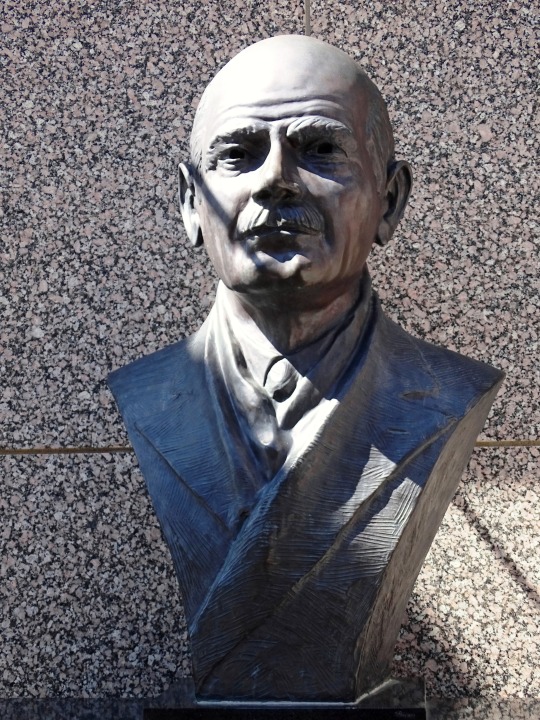

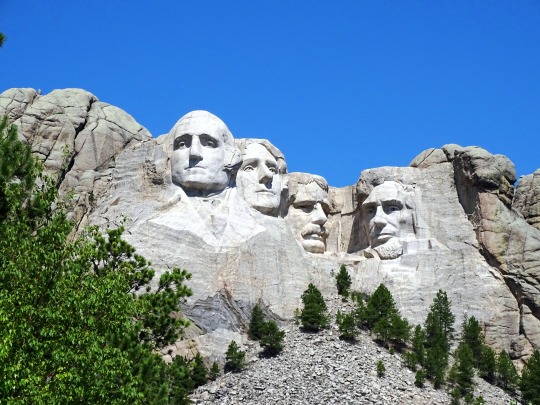
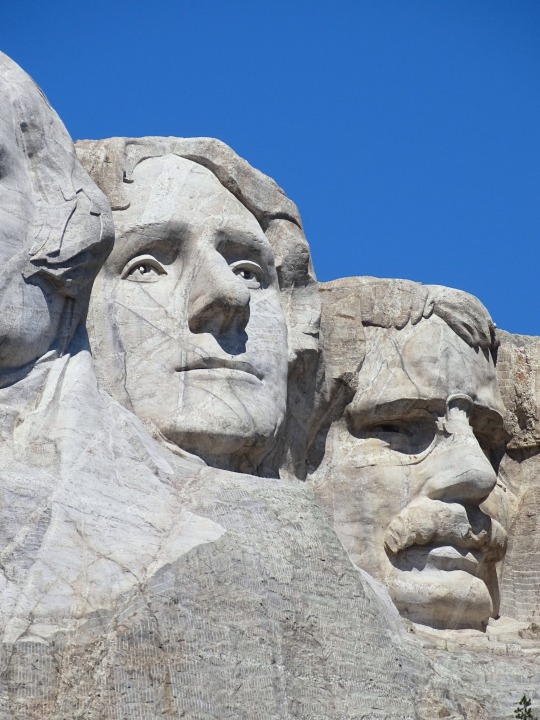






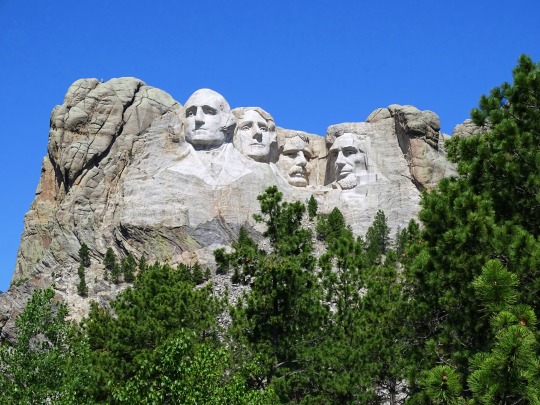
Gutzon Borglum began sculpting Mount Rushmore on October 4, 1927.
#Gutzon Borglum#began sculpting#Mount Rushmore National Memorial#USA#4 October 1927#anniversary#US history#controversial memorial#travel#summer 2019#controversy#native american land#South Dakota#vacation#original photography#George Washington#Thomas Jefferson#US President#Teddy Roosevelt#Theodore Roosevelt#Abraham Lincoln#tourist attraction#landmark#Harney Peak granite#Black Hills
0 notes
Text
United States Patent and Trademark Office
0462795 – July 16, 1891 – Method Of Producing Rain-Fall
803180 – October 31, 1905 – Means for Producing High Potential Electrical Discharges
1103490 – August 6, 1913 – Rain-Maker
1225521 – September 4, 1915 – Protecting From Poisonous Gas In Warfare
1279823 – September 24, 1918 – Process and Apparatus for Causing Precipitation by Coalescence of Aqueous Particles Contained in the Atmosphere
1284982 – November 19, 1918 – Process and Apparatus for Procuring and Stimulating Rainfall
1338343 – April 27, 1920 – Process And Apparatus For The Production of Intense Artificial Clouds, Fogs, or Mists
1358084 – November 9, 1920 – Method of Producing Fog-Screens
1619183 – March 1, 1927 – Process of Producing Smoke Clouds From Moving Aircraft
1665267 – April 10, 1928 – Process of Producing Artificial Fogs
1892132 – December 27, 1932 – Atomizing Attachment For Airplane Engine Exhausts
1895765 – January 31, 1933 – Artificial Production of Fog
1928963 – October 3, 1933 – Electrical System And Method
1957075 – May 1, 1934 – Airplane Spray Equipment
1993316 – March 5, 1935 – Apparatus for and Method of Producing Oil Fog
2052626 – September 1, 1936 – Method of Dispelling Fog
2097581 – November 2, 1937 – Electric Stream Generator – Referenced in 3990987
2173756 – September 19, 1939 – Process of Producing Fog or Mist by Partial and Flameless Combustion
2352677 – July 4, 1944 – Artificial Fog Production
2476171 – July 18, 1945 – Smoke Screen Generator
2409201 – October 15, 1946 – Smoke Producing Mixture
2480967 – September 6, 1949 – Aerial Discharge Device
2527230 – October 24, 1950 – Method of Crystal Formation and Precipitation
2527231 – October 24, 1950 – Method of Generating Silver Iodide Smoke
2550324 – April 24, 1951 – Process For Controlling Weather
2582678 – June 15, 1952 – Material Disseminating Apparatus For Airplanes
2611992 – September 30, 1952 – Engine Exhaust Operated Fluent Material Distributor
2614083 – October 14, 1952 – Metal Chloride Screening Smoke Mixture
2633455 – March 31, 1953 – Smoke Generator
2688069 – August 31, 1954 – Steam Generator – Referenced in 3990987
2721495 – October 25, 1955 – Method And Apparatus For Detecting Minute Crystal Forming Particles Suspended in a Gaseous Atmosphere
2730402 – January 10, 1956 – Controllable Dispersal Device
2903188 – April 2, 1956 – Control of Tropical Cyclone Formation
2756097 – July 24, 1956 – Process for Weather Control
2801322 – July 30, 1957 – Decomposition Chamber for Monopropellant Fuel – Referenced in 3990987
2835530 – May 20, 1958 – Process for the Condensation of Atmospheric Humidity and Dissolution of Fog
2871344 – January 27, 1959 – Long Distance Communication System
2881335 – April 7, 1959 – Generation of Electrical Fields
2908442 – October 13, 1959 – Method For Dispersing Natural Atmospheric Fogs And Clouds
2962450 – November 29, 1960 – Fog Dispelling Composition
2963975 – December 13, 1960 – Cloud Seeding Carbon Dioxide Bullet
3019989 – February 6, 1962 – Atmospheric Space Charge Modification
2986360 – May 30, 1962 – Aerial Insecticide Dusting Device
3046168 – July 24, 1962 – Chemically Produced Colored Smokes
3056556 – October 2, 1962 – Method of Artificially Influencing the Weather
3126155 – March 24, 1964 – Silver Iodide Cloud Seeding Generator
3127107 – March 31, 1964 – Generation of Ice-Nucleating Crystals
3131131 – April 28, 1964 – Electrostatic Mixing in Microbial Conversions
3140207 – July 7, 1964 – Pyrotechnic Composition
3174150 – March 16, 1965 – Self-Focusing Antenna System
3234357 – February 8, 1966 – Electrically Heated Smoke Producing Device
3274035 – September 20, 1966 – Metallic Composition For Production of Hydroscopic Smoke
3284005 – November 8,1966 – Weather Control by Artificial Means
3300721 – January 24, 1967 – Means For Communication Through a Layer of Ionized Gases
3313487 – April 11, 1967 – Cloud Seeding Apparatus
3338476 – August 29, 1967 – Heating Device For Use With Aerosol Containers
151 notes
·
View notes
Text


October 23, 1929
Journals of Anais Nin 1927-1931
[volume 4]
#anais nin#october#october 23#literature#words#quotes#academia#dark academia#quote#lit#books#books and libraries#reading#quote of the day#bookworm#book quotes#prose#booklr#bibliophile#excerpt
357 notes
·
View notes
Text
The Terror: When, How, Where... (PART 3)
See Part 1 (Intro, Episode 1 through 5)
See Part 2 (Episode 6 through 9)
1927 Admiralty Map (My beloved?)
To see the full map to interact with, click this link
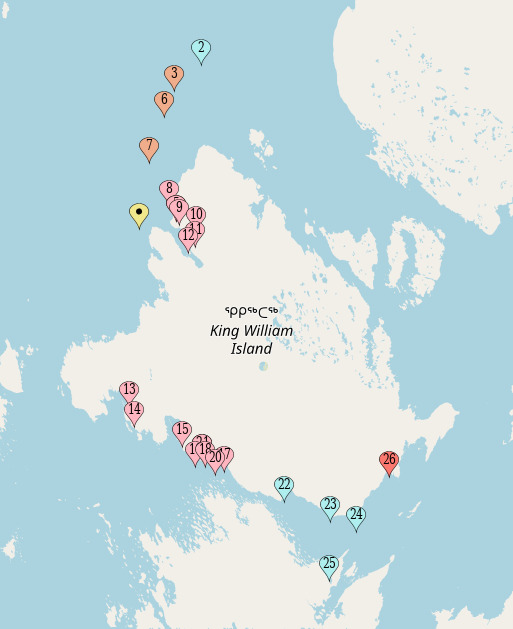
List of Locations and approx dates:
Location 1 - David Young's grave (71.22, -96.60) - Sept 5 1846
Location 2 - Ships Position September 1846 (70.25, -98.00) - Sept 12 1846
Location 3 - Ships Position June 1847 (70.15, -98.30) - May 24 to Jun 11 1847
Location 4 & 5 - The Cairn and the Ice Camp (69.66, -98.27) - May 28 1847
Location 6- The Ships in January 1848 (70.055, -98.59) - January 10th- 17th 1848
Location 7- The Ships in April 1848 (69.88, -98.57) - April 22nd 1848
Location 8 - Fairholmes' Last Resting Place (69.72, -98.35) - April 23rd 1848
Location 9 - Terror Camp (69.644, -98.24) - April 24th-26th 1848
Location 10 - Netsilik Massacre (69.62, -98.05) - April 25th 1848
Location 11- Hodgson is found - Mutineers: (69.56, -98.06) - April 27th 1848
Location 12 - Hodgson is found – Crozier (69.54, -98.14) - April 27th 1848
Location 13 - Fitzjames Collapses (68.94, -98.79) - June 10th 1848
Location 14 - Gibson's death (68.860, -98.73) - June 27th 1848
Location 15 - Fitzjames' Death (68.78, -98.21) - July 28th 1848
Location 16 - The NorWest Passage (68.7, -98.06) - July 28th 1848
Location 17 - Hospital Camp (68.68, -97.74) - August 3rd
Location 18 – Bridgens' death (68.70, -97.95) - August 10th
Location 19/21 - Mutineer Camp (68.73, -97.99) - August 3rd
Location 20 - Crozier Ambushed (68.67, -97.84) - August 10th
Location 22 - Tulloch Point (68.56, -97.09) - October 5th - (Crozier) - August 30th (Little)
Location 23 - The Library (68.48, -96.58) - October 9th (Crozier) - September 9th (Little)
Location 24 - Todd island (68.44, -96.29) - October 9th (Crozier) - September 14th (Little)
Location 25 - Starvation Cove (68.24, -96.59) - October 10th (Crozier) - September 28th (Little)
Location 26 - Netsilik Summer Camp (68.66, -95.932) - Silna
Historical and documented locations are in blue
Proposed locations by Franklin Researchers in orange
Proposed locations by yours truly in pink
Historical locations but for which the show took liberties... in red
P.S I couldn’t take my own screenshot from the show so… I had to try and find the best matching image out there this time :(
On With the Show
Episode 10 - We Are Gone
Episode 10 is full of action and, thankfully, will not make me ramble too much until after Silna rescues Crozier. If we generously accept that the previous locations and date I gave are good (or good enough), then we’ll situate the first three quarters of the episode pretty easily.
So, for the end of our tragedy, we start in a place we’ve been before;
Location 19 - Mutineer’s Camp (68.73, -97.99)
Date: August 16th 1848
Nighttime - None
Daylight - 17h 26 min
Twilight -6h 34 min
Sunrise: 3:51 am, Sunset: 9:17 pm
The Episode starts with Hickey “welcoming” Crozier into his camp and we learn a clue about the date. “It’s a Wednesday”, followed, back at Hospital Camp, by Lt. Little who let us know that it has been a day since Crozier was taken by Des Voeux and Co.

So, the first question I have is: Did Des Voeux camp out the night? With what tent and what supply? They did not appear to have dragged anything with them. Perhaps they walked all night but that would have made for a very slow walk, probably, since we established that the Mutineers had camped only 6 miles away from the Hospital Camp and we’ve established previously that a slow pace for walking would be around 2mph.
Let’s address the first point. “It’s a Wednesday”. Well, my friends, I had previously placed Crozier’s being ambushed on August 10th and… that’s a thursday.
Therefore, I need to make a revision to Part 2, I’m afraid… I am not overly worried about this, however. I had based my timeline with very large stroke and I could either adjust that everything happens 2 days earlier that I previously said it would or 5 days later. Considering that the Tuunbaq battle happens during twilight and ends just as the sun is about the rise, and that was a couple of days later, I would be inclined to move everything forward 5 days. This would also give more “nighttime” for Hodgson to annoy Goodsir with his Catholic story… But also, this would explain why LeVesconte was feeling desperate enough to propose abandoning the ill, again. Time is flying by and they’re just… sitting… in that camp…
Therefore! Crozier comes into the Mutineer Camp on August 16th :) and we’re moving the day of Bridgens’ death on August 15th.
August 16th would also become the end for Mr. Goodsir.
And we are BACK at Hospital Camp for Le Vesconte little mutiny and, I have to say, I was so, so proud of Edward Little for trying to do the right thing… in a situation when there are no right decisions...
Location 17 - Hospital Camp (68.68, -97.74)
Date: August 16th 1848
Nighttime - None
Daylight - 17h 26min
Twilight - 6h 34 min
Sunrise: 3:50 am, Sunset: 9:16 pm

From Le Vesconte’s summary of their decision, this is also the day they leave Hospital Camp and, therefore, the day of Jopson’s death :(
Location 21 - Tuunbaq Battle (68.67, -97.84)
Date: August 18th 1848
Nighttime - None
Daylight - 17h 07 min
Twilight -6h 53 min
Sunrise: 4:00 am, Sunset: 9:06 pm

This is the next day, August 17th to August 18th (Tuunbaq dies shortly before the sun rises).
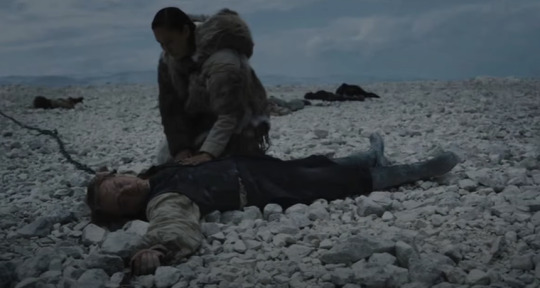
Twilight would start at 9:19 pm but we started the day with a Goodsir breakfast and the question I would like to ask is this:
Did Hickey just wait until like… midnight to get them to start pulling that sledge? It looks like they did not come directly from the camp but from a little bit further away and maybe they chose to come at it from that angle because of the slope… Anyway, I’ll propose that, yes Hickey chose to wait until midnight to make them start pulling, making the battle happen on August 18th!
This would also mean that it would have taken almost 18 hours for Goodsir’s poison to take effect?
We’ll mark the location as the same as the Mutineer’s camp since they are so close to one another.
And now:
Crozier Recovers
Location 19 - Mutineer’s Camp (68.73, -97.99)
Date: October 2nd 1848
Nighttime - 6h 20 min
Daylight - 10h 56 min
Twilight - 6 h44 min
Sunrise: 6:52 am, Sunset: 5:48 pm
The timeline for an amputation’s recovery are what I’ll need to use to check on when it is that Crozier can walk again.
Let’s start with the stump: I note that when Crozier announces to Silna his intention to try and find his men, the stump doesn’t have any kind of coverings. Meaning it would have been closed or scared well enough to not need it anymore.
(PS Looking for a screenshot of when he wakes up)
As you can imagine I haven’t found a lot of information on the web concerning how long an amputation would take to heal if it was made in the middle of the arctic wilderness with a hunting knife and no modern medical care… But there are some beautiful papers out there about how amputation being so ancient (31 000 years ago) proved that caring for our ill was very much a way of life even back then. Anyway, according to Myhealth.Alberta.ca, a below the knee amputation would take up to 4 to 8 weeks to be able to return to work with modern care… it took Mr. Blanky a measly 2 weeks of recovery before he could walk the half mile between Terror and Erebus after his own amputation and damn, if this is not the proof that Mr. Blanky was the GOAT.
Mr. Blanky also had the advantage of being cared for by a doctor (although, 19th century Doctor…), which Crozier does not. Based on this, I will accept that it would be reasonable for Crozier, who lives in the same world of superhumans as Thomas Blanky, might have needed the full 4 weeks to recover. At least.
We also know from our analysis of some hair growth for episode 9 that it takes 1 month to grow half an inch of beard. Honestly, I’d say this looks like at least 1 month and a half growth…
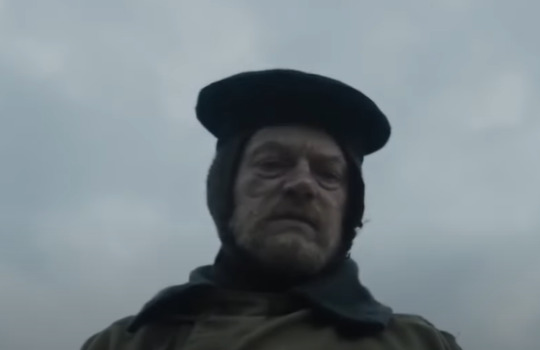
Also, to find out the approximate date, Crozier tell us that it’s “too late” to be this far North. No doubt he means that they are most certainly veering into the colder months and that he knows that if they would need to reach the Netsilik winter camp soon. It’s definitely not August anymore.
Finally, we know that the endgame is, I assume, Starvation Cove (See location 25). Starvation Cove, we know,
I am going a little bit ahead of myself, I know, but I feel this is important to establish the timeline because Starvation Cove is a known location, I do not need to guess where it is. I can already calculate that it is, when taking the probably path the survivors took (based on the 1927 admiralty map), 50 miles away from the Hospital Camp.
We established, at the end of part 2, that the speed they would have gone at would have been about 1 mile per day. Maybe after dropping the desks and so many tents (there was only one boat in Little’s last camp), they could have gained a little bit of speed. Let’s say 1.5 miles per day. This would mean that if they were going at their best pace, they could have reached Starvation Cove in a month.
And, then, they would have had to stop, too exhausted to move on,and they would have known hunger enough to resort to the last ressource…
I also want to point out that there is a fine layer of snow on the tents and the crates when Crozier reaches it. And there is frost on Poor Lt. Little’s face. So, here is the thing about snow: it melts when exposed to the sun at near freezing temperature, if it had fallen on surfaces that will absorb heat. In order for the frost to have remained on Edward’s face and for the barrels to be frost and snow covered (lightly), my canadian nose tells the temperature may have been closer to 23F (-5C) than at freezing (32F or 0C). Which would be average for the beginning of October (according to timeanddate.com) rather than September.
I think I will accept that even though Blanky, bless his face, recovered from an amputation in 2 weeks, it could have taken Crozier 6 or 7 weeks and based on the time one would need to travel to Starvation Cove (probably 1 week for Crozier and Silna if we account for Crozier’s recovering speed I would like to established at 10 miles per day and also accounting for the fact that he looked MUCH improved by the time they reached Starvation Cove, which requires time) and between 30 to 40 days for Little, this would be the right timeframe for the travel and starvation to occur...
This would date Crozier and Silna’s departure from the Mutineer’s Camp around October 2nd
And now, Crozier and Silna gets on their way to the next stop:
Location 17 - Hospital Camp (68.68, -97.74)
Date: October 2nd 1848
Nighttime - 6h 20 min
Daylight - 10h 58 min
Twilight - 6 h42 min
Sunrise: 6:50 am, Sunset: 5:47 pm

The hospital camp being, as established, 6 miles from the Mutineer camps, they would have made it there on the first day. And probably around noon if they had started to walk at first light. Crozier would have been slower than Silna and may have been able to walk only 10 to 15 miles per day. For the first couple of days, I expect that he could have walked closer to 10 miles than 15. I also would like to think that he would have taken the time to bury Jopson, making him the Gladman Point Skeleton (NdLe-16)
Location 22 - Tulloch Point (68.56, -97.09) (Not shown in show)
(Crozier)
Date: October 5th 1848
Nighttime - 6h 44 min
Daylight - 10h 41 min
Twilight - 6 h35 min
Sunrise: 6:54am, Sunset: 5:27 pm
(Lt Little)
Date: August 30th 1848
Nighttime - None
Daylight - 15h 22 min
Twilight - 8 h38 min
Sunrise: 4:46 am, Sunset: 8:08 pm
On their way to Starvation Cove, they would have had to cross Douglas Bay, a 3 miles wide little bay near the southern part of KWI. It’s 26 miles from the Mutineers Camp (Which Crozier departed on October 2nd) and 20 miles from the Hospital Camp (Which Lt. Little departed on August 16th)

At a recovering pace of 10 miles per day for Crozier/Silna, they would have reached Douglas Bay at the end of their 3rd day of walking and I suspect that even though they sitll had some miles in them, they would have started fresh the next morning to cross the bay (Oct 6th).
At an average pace of 1.5 miles a day, Little and Le Vesconte would have reached Douglas Bay in 14 days and probably would have waited until the beginning of the 15th day to cross.
Location 23 - The Library (68.48, -96.58)
(Crozier)
Date: October 9th 1848
Nighttime - 7h 32 min
Daylight - 10h 01 min
Twilight - 6 h 27 min
Sunrise: 7:11 am, Sunset: 5:13 pm
(Lt Little)
Date: september 9th 1848
Nighttime - None
Daylight - 14h 00 min
Twilight - 10 h 00 min
Sunrise: 5:19 am, Sunset: 7:19 pm
This is the place where Little and Le Vesconte dropped all the books, what looks to be a desk and 2 side tables? (one would think that they’d have left that behind before Jopson :( )

I think that at this point they are getting much closer to the southernmost point of KWI, Booth Point. For 2 reasons: 1- Crozier seems to have recovered enough to be walking straight and without much difficulty and with enough strength to help pull Silna’s sled and 2- You can see they are close to the strait, like, right next to it. Which means that they would have been making ready to cross, which could be the reason why this is where they abandoned all the non essentials. If Little and Co crossed in mid-september, as the timeline I supposed when discussing Crozier’s recovery would lead me to believe, they would have crossed on thin ice, making it more necessary than ever to lighten the load. And because I started this journey to figure out how to reconcile the show with the locations of where relics were found, I think I would like this to be quite near River Piffer… you know… not too far from where they would have buried Le Vesconte… And we have for location 23 (68.48, -96.58)

I think Le Vesconte and Little would have rushed to cross Douglas Bay as to not be on ice when it is not cold enough yet to assure them it wouldn’t crack under their weight. They would probably have pushed to cross on the same day, making it a whooping 3 miles in one day. This would certainly have exhausted the men, bringing them closer to their demise. They would cross on August 31st, and start again on September 1st for the remaining 10 miles until location 23, probably at a slightly slower pace of 1.25 miles a day and reached the Library on September 9th.

TO BE NOTED: since 2009, the skeleton found and believed to be Le Vesconte by C.F. Halls in 1869 has been reidentified as Harry Goodsir. But! Well! You know!
Location 24 - Todd island (68.44, -96.29) (Not shown in show)
(Crozier)
Date: October 9th 1848
Nighttime - 7h 33 min
Daylight - 10h 01 min
Twilight - 6 h26 min
Sunrise: 7;10 am, Sunset: 5:12 pm
(Lt Little)
Date: September 14th 1848
Nighttime - 1h 22 min
Daylight - 13h 20 min
Twilight - 9 h18 min
Sunrise: 5:37 am, Sunset: 6:57 pm
The Route to Starvation Cove: I am still going to take from the 1927’s admiralty map there and accept that they crossed the Simpson Strait near Todd Island. One of the reason why I would agree with it is because their goal was to get to Back Fish River. Upon reaching Booth Pt, they might have realised that, well, that’s it. That’s the end of KWI. There is no land bridge connecting it to the Adelaide Peninsula. At that point, they had to cross but, before that? Well, they maybe had a chance that they could have kept pulling their sledge on firm ground and not attempt what might have been a frozen strait or a dangerous trek on unstable ice, especially in september. They would have attempted to cross at the nearest point possible from the river they were trying to get to. So, instead of simply crossing at the narrowest part of the Simpson Strait, they kept on going until they were facing Todd Island

Todd Island is 7.5 miles from the Library.
If we say that unloading their boat made the pace easier and back at 1.5 miles per day, then, Little would have reached this point in 5 days on September 14th and Crozier and Silna on the same day as they reached the Library, October 9th.
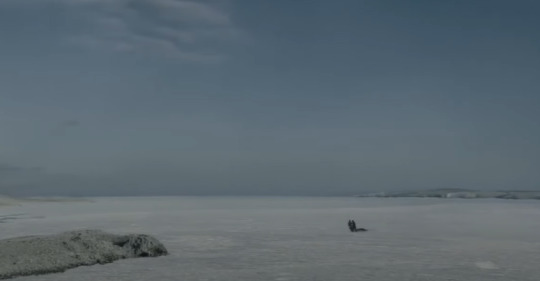
Location 25 - Starvation Cove (68.24, -96.59)
(Lt Little)
Date: September 28th 1848
Nighttime - 5h 46 min
Daylight - 11h 29 min
Twilight - 6 h45 min
Sunrise: 6:31 am, Sunset: 6:00 pm
(Crozier)
Date: October 10th 1848
Nighttime - 7h 44 min
Daylight - 9h 55 min
Twilight - 6 h21 min
Sunrise: 7;14am, Sunset: 5:09 pm
We know where this is :(
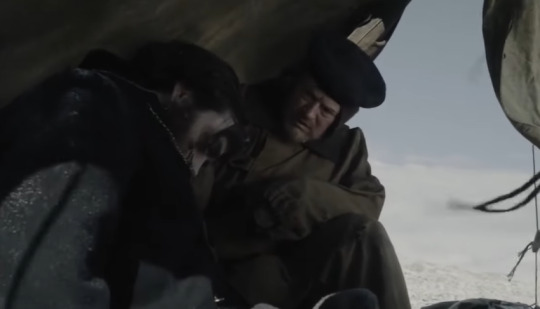
The thing about Starvation cove is that if we accept that Franklin’s men crossed at Todd Island, they would have been going SW when they should have been going SE to reach Back Fish River.

I would like to suggest that upon knowing that they would have to cross a large expense of ice in mid september ( which could have been potentially perilous as the ice was probably made fragile by the summer and it was not cold enough yet to secure the way), they… simply chose to go toward the point of land they could see. Which was this cute little point. From there, they followed its coast until their last stand.
Now, more daunting than anything, this is a monstrous 9 miles to cross. For Lt. Little and his unfortunate companions who I’ve recently reduced to a pace of 1.5 miles a day, this would have meant they needed 6 days to cross at that pace! I think they would have deemed it too dangerous and would have pushed, same as they did for Douglas Bay and made it 2.5 miles a day (crossing in 4 days - Sept 18). Once again, this would have taken from their reserves all their reserves and they would have slowed down to 1.2 miles a day until they reached Starvation cove, 7 miles away from their initial landing on the Adelaide Peninsula. From Todd Island to their last resting place, they would have walked another 10 days. It is September 28th 1848 and they have been hauling the boats for 5 months. They total mileage would have been between 150 and 170 miles with my proposed route from Terror Camp to Starvation cove.
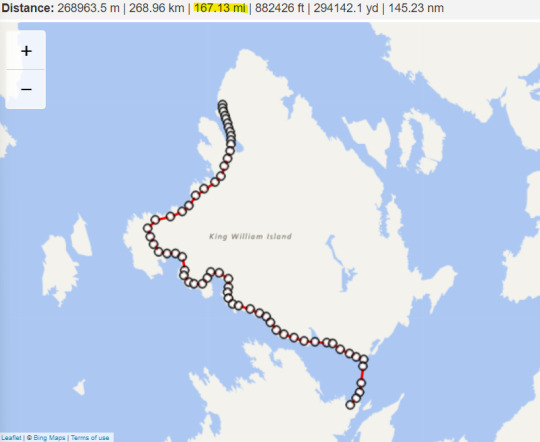
Crozier and Silna would have been able to cross and reach Starvation Cove in a day, reaching it on October 10th, 12 days after Lt. Little and what was left of the crew.
OTHER LOCATIONS
Location 26 - Netsilik Summer Camp (68.66, -95.932)
For this one, I want to believe it is Gjoa Haven.

From Terror Camp, this would have been a 100 miles journey for Silna. If she took her time and made a comfortable 10 miles a day, she would have walked from TC to GH in 10 days or so. 2 weeks. But she probably footed it because it seems like she wanted her people to help, in some capacity, the Frankliners (which prompted the unnamed Netsilik hunter to lecture her on how the white men were disturbing the balance on the island)
Then, from Gjoa Haven to the Mutineer’s camp, it would have been 50 miles. If she had left with the other shaman the day Crozier got ambushed, august 15th (as it seems to be implied by the fact that the scene announcing her travel companion was ready to go being just after Tom Hartnell’s death), she would have made it just in time to save Crozier 3 days later on August 18th by walking 15 to 20 miles a day, which is a moderate pace for a hiker.
So, this coincidence comforts me into thinking that, yes, their summer camp WAS in Gjoa Haven : )
Which is to say, had her journey been continuous, she would have made it to the same destination as the men of Franklin in only 30 days or so...
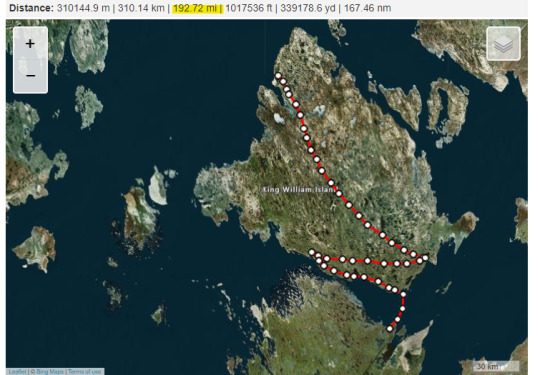
It took Little 150 days to reach Starvation Cove…
Women are stronger?
Location 27 - Netsilik Winter Camp (???)
I don't even want to attempt this. There are no clues whatsoever as to where they might be. They also deserve a little bit of privacy!
That’s it! That’s the end! We’ve made it, friends! All 10 episodes!
For Part 4, I will attempt to correct the dates I retroactively changed from part 1 to part 2 and then from part 2 to part 3 and package all of this in a neat presentation that would be more digestible than this wall of rambling.
I will take my time to complete part 4 and review everything so I might upload it in a week's time or so, maybe more.
I rushed Part 1 through 3 so that it could get out of my head and you all paid the price for how much rambling there is ;) sorry!
Thank you for reading so far! This was a blast even though I felt like I was losing my mind quite a bit!
#the terror#the terror amc#the terror timeline#This was a MARATHON#Episode 10#19th Century dead sailors#Reference#Maps and stuff#Hopes it helps someone else!
60 notes
·
View notes
Text
Soviet film posters
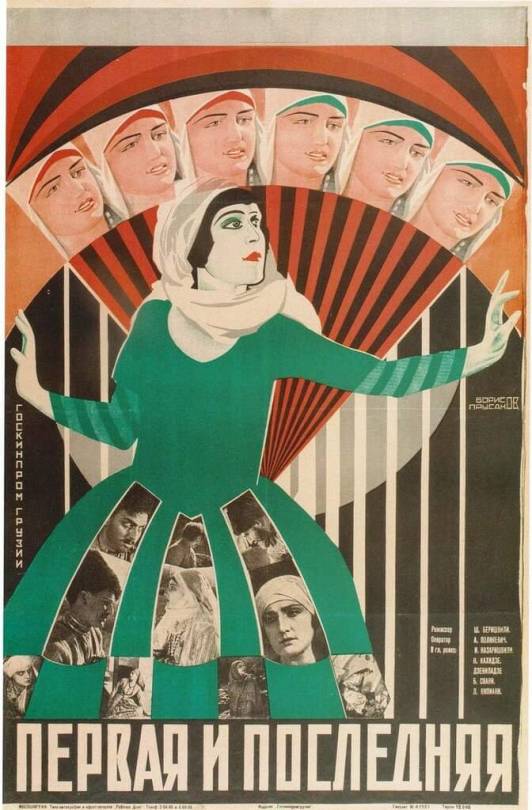
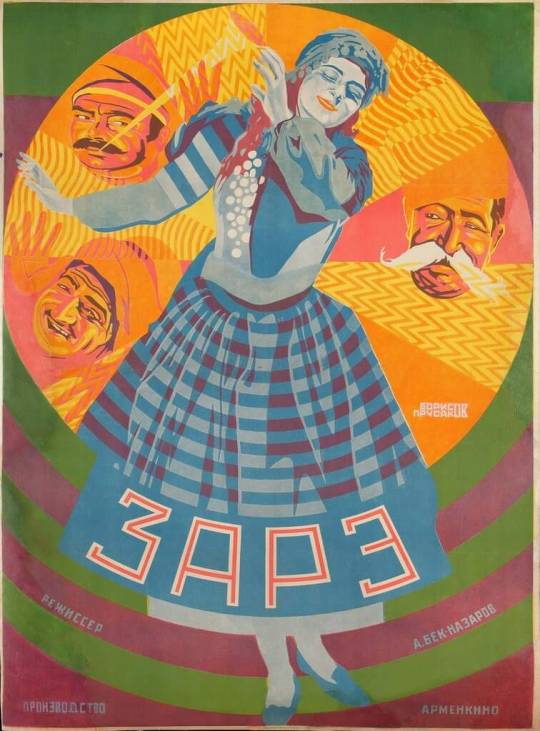








1: 1927 poster for the film “First and Last”.
2: 1927 poster for the film “Zare” — a Soviet/Armenian Drama released in 1926.
3: 1927 poster for the film “Two Worlds”, starring Hans Merendorf and Maria Leiko.
4: 1928 Poster for the Film “The Third Wife of the Mullah” by Iosif Gerasimovich.
5: 1927 poster of the film “Where is the man? He has left to go see 'The Girl with the Hatbox'.” by Semyon Semyonov-Menes.
6. 1927 poster for the film “October” (Sovexportfilm) — One of the most significant Soviet films of the 1920s. This is a historical and revolutionary film made for the 10th anniversary of the October Revolution.
7: 1925 poster for the film “The Golden Reserve” by Anatoly Belsky.
8: 1923 poster for the first Soviet Azerbaijani feature film: “The legend of Maiden Tower”.
9: 1930 poster of the film “Judas (Antichrist)” — a black and white silent film. A psychological drama of a priest who decided to break with religion, “unmasking the counterrevolutionary role of the clergy during the Civil War”.
10: 1927 poster for the film “Dark Forces”.
176 notes
·
View notes
Photo








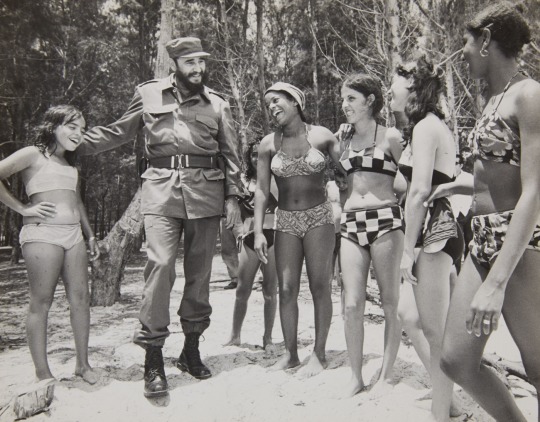

Ms Luigia "Gina" Lollobrigida OMRI (4 July 1927 – 16 January 2023)
Destined to be called "The Most Beautiful Woman in the World", Ms Lollobrigida was the daughter of a furniture manufacturer, and grew up in the pictorial mountain village. She studied sculpture at Rome’s Academy of Fine Arts, and started her career with minor Italian film roles before coming third in 1947’s Miss Italia pageant.
After refusing a contract with Howard Hughes to make three pictures in the United States in 1950, Ms Lollobrigida gained for starring turns in 1952’s “Fanfan la Tulipe” and 1953’s “Bread, Love and Dreams,” the latter of which netted her a BAFTA nomination for Best Foreign Actress.
Ms Lollobrigida’s first American film was “Beat the Devil,” a 1953 adventure comedy directed by John Huston that cast her opposite Humphrey Bogart. Over the course of the ’50s and ’60s, she starred in numerous French, Italian and European-shot American productions, with highlights including “Trapeze” with Burt Lancaster and Tony Curtis, “The Hunchback of Notre Dame” as Esmerelda, “Solomon and Sheba” with Yul Brynner, “Never So Flew” with Frank Sinatra and Steve McQueen, “Come September” with Rock Hudson, and “Woman of Straw” with Sean Connery, and “Buona Sera, Mrs. Campbell,” with Shelley Winters.
Her roles made her a major sex symbol of Italian cinema; in 1953, she won Italy’s David di Donatello award for Best Actress for her performance in the opera star Lina Cavalieri’s biopic “Beautiful But Dangerous,” known in Italian as “The World’s Most Beautiful Woman.”
She later won two more David di Donatello Award for “Imperial Venus” and “Buona Sera, Mrs. Campbell,” a Golden Medal of the City of Rome in 1986, a 40th Anniversary David in 1996 and a 50th Anniversary David in 2006. In 1961, she won the Golden Globes’ Henrietta Award for “World Fan Favorite,” and received nominations for “Falcon Crest” and “Buona Sera, Mrs. Campbell.”
After the ’60s, Lollobrigida’s career began to slow down, but she continued to act intermittently, including in the 1995 Agnes Varda film “Les cent et une nuits de Simon Cinéma,” and in ’80s TV shows such as CBS’ “Falcon Crest” and ABC’s “The Love Boat.”
Ms Lollobrigida also developed a successful second career in photojournalism during the ’80s. She obtained an exclusive interview with Cuban leader Fidel Castro and also photographed many famous film stars, as well as publishing a number of books of her photographs.
In 2011 she made her final film appearance, playing herself in a cameo for the Italian parody film “Box Office 3D: The Filmest of Films.”
The screen legend sale of some of her 23 jewels from her Bulgari collection at Sotheby’s in 2013 to help fund an international hospital for stem-cell research.
On 16 October 1999, Lollobrigida was nominated as a Goodwill Ambassador of the UN Food and Agriculture Organization
Ms Lollobrigida won the Berlinale Camera at the Berlin Film Festival in 1986, Karlovy Vary Film Festival special prize in 1995, and the Rome Festival’s career prize in 2008. In 2018, she received a star on the Hollywood Walk of Fame.
Ciao, Gina, Riposa in Pace
(Armando Pietrangeli, “Light and Shadow,” Gina Lollobrigida,1960, Trapeze 1956, Woman Of Rome,1954, Salomon & Sheba,1959, Come September, 1961,Un Bellissimo Novembre,1968, The Hunchback of Notre Dame,1956, In London to publicise her book of photographs titled Italia Mia,1974, Fidel Castro shot by Ms Lollobrigida,1974, Gina Lollobrigida pictured on July 11, 2022 in Rome).
#art#movirs#film#legend#gina lollobrigida#rip#rip gina lollobrigida#agnes varda#rock hudson#ciao#photography#icon#holywood#italy#falcon cest#the love boat#Esmeralda#yul brynner#howard hughes#paul newman#fidel castro#tony curtis#sheba#the hunchback of notre dame#trapeze#bafta#burt lancaster#frank sinatra#golden age#UN
279 notes
·
View notes
Text

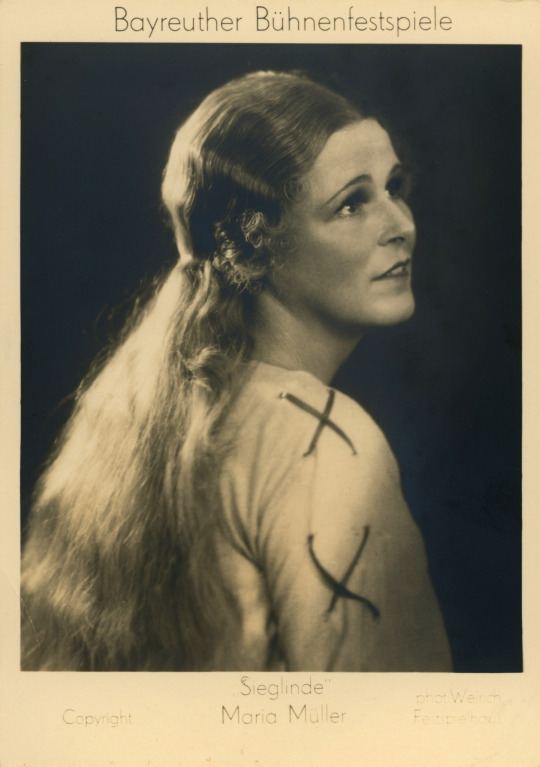




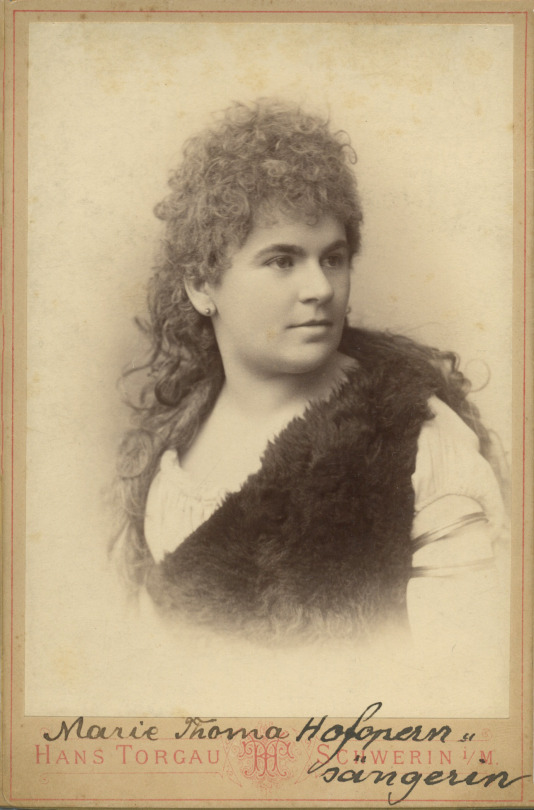
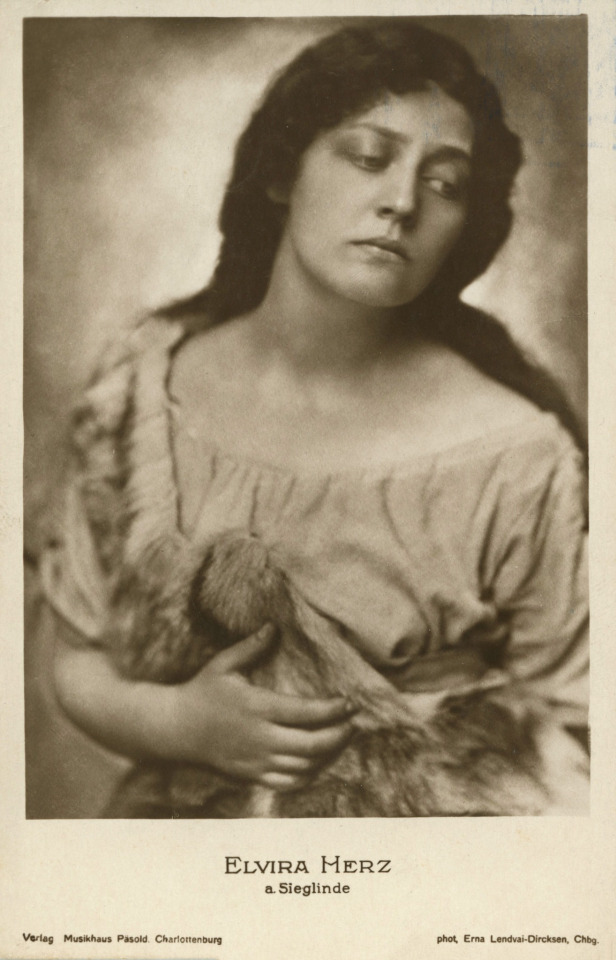
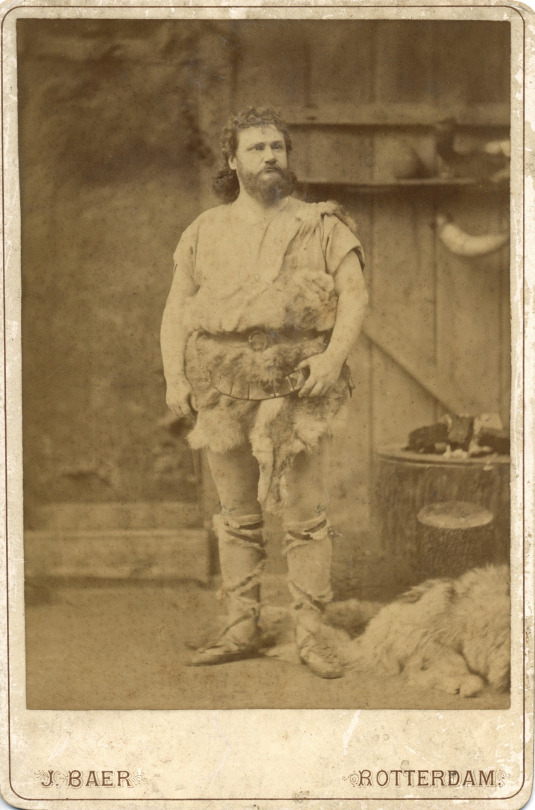


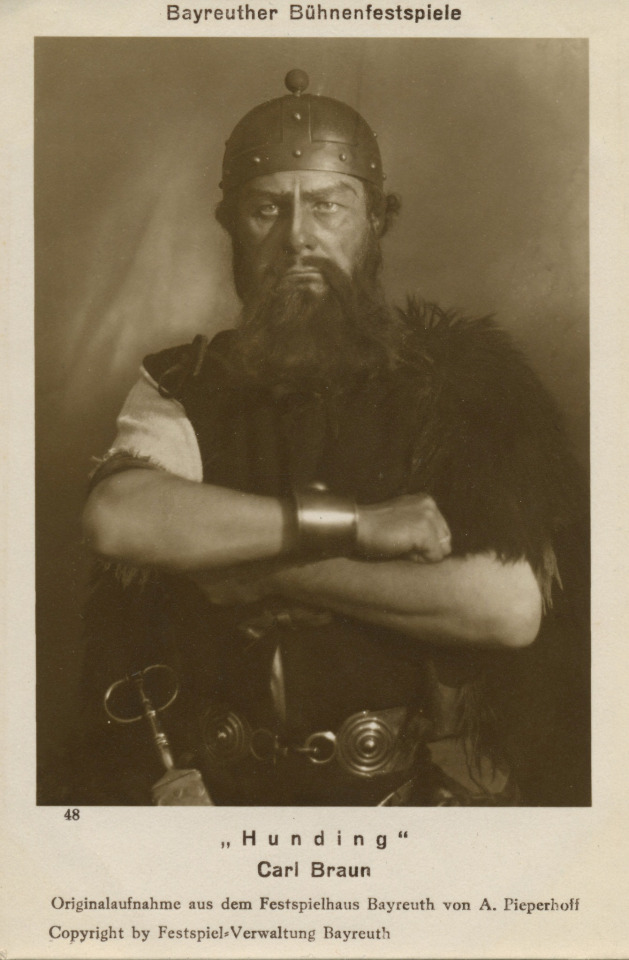

„WALKÜRE“ R. Wagner / FIRST ACT
Some Sieglindes, Siegmunds and Hundings
Maria Müller (29 January 1898 – 15 March 1958); Czech-Austrian lyric/dramatic soprano, Emanuel List (22 March 1888 - 21 June 1967; Austrian-American bass and Franz Völker (31 March 1899 – 4 December 1965); dramatic tenor, Bayreuth, 1933
Maria Müller as Sieglinde, Bayreuth, 1937
Martha Leffler-Burckhardt (16 June 1865 -14 May 1954); German soprano as Sieglinde, Bayreuth, 1908
Rose Pauly-Dressen (15 March 1894 – 14 December 1975); Hungarian dramatic soprano as Sieglinde, Frankfurt, ?
Martha Selle as Sieglinde, Breslau, ?
Florence Easton (25 October 1882 – 13 August 1955); English dramatic soprano as Sieglinde, Berlin, ?
Marie Thoma as Sieglinde, Schwerin, ?
Elvira Herz as Sieglinde, Berlin, ?
Adolf Gröbke ? (26.5.1872 -16.9.1949); German tenor as Siegmund, Rotterdam, ?
Lauritz Melchior (20 March 1890 – 18 March 1973); Danish-American heldentenor as Siegmund, Bayreuth, 1924, 1925 and 1931
Fiorenzo Tasso (1901 - 29. 3. 1976); French tenor as Siegmund, Milan, 1945
Carl Braun (2 June 1886 – 24 April 1960); German bass as Hunding, Bayreuth, 1925, 1927, 1928 and 1930
Lorenz Corvinus (20 July 1870 - 18 January 1952); German bass as Hunding, Bayreuth, 1908
#classical music#opera#music history#bel canto#composer#classical composer#aria#classical studies#maestro#chest voice#Die Walküre#The Valkyrie#Richard Wagner#Wagner#Der Ring des Nibelungen#The Ring of the Nibelung#Norse mythology#Völsunga saga#Poetic Edda#Sieglinde#classical musician#classical musicians#classical voice#musician#musicians#music education#music theory#history of music#historian of music#classical
20 notes
·
View notes
Text
In the beginning of 20th century there were very rough estimates of exactly what population of today's Kazakhstan was, and how many kazakh people were out there.
There are some estimates that said it was like 6.5 million kazakhs in 1914.
There are some communist party documents that suggest they thought it was 10 million.
One Moscow historian said that only in Northern regions there were 9 million around that time.
Russian Revolution happened through 1917-1923. At this time troops ravaged the countryside. There is an excerpt from a newspaper that only in 1918 30% of population in Turkistan region died from hunger.
In 1921-1922 a drought hit, and around 1.7 million people died.
In 1926-1927 Goloshekin decided to organise "Small October" that was set to suppress the national intelligentsia(most educated and politically adept people) as well as collectivize the agriculture. The collectivization somehow went so poorly that from 40 million heads of livestock registered in 1929(and taken from kazakh people) only 4 million remained 1933.
Because all of this 3.3 million people living in countryside died. Lost to hunger and sickness.
The hunger of 1930-1933 was called Asharshylyq meaning simply hunger(of a nation). There are debates on whether it is a second one(the first being in 1921-1922) or even third.
Through 1928-1932 USSR continued to sell grain abroad "to get money for industrialisation".
There were also repressions, where USSR was fighting against uprisings and people against the regime.
There was also 600 thousand Kazakhstani people that went to WW2 and died. 400 thousand of them were kazakh men and women. 300 thousand civilians in Kazakhstan died behind the front lines.
There were around 3.6 million kazakhs in 1959.
Today Kazakhstan nears 20 million people in population. In 2021 there were a bit more than 13 million kazakhs that lived in Kazakhstan.
There is really no telling how much was lost. Not just in people but also in culture. Kazakhs were nomadic and had most of their culture shared orally in crafts that were very perishable.
I heard a story once, from a grown woman of age. She was a girl and someone in her family somehow procured a recording of dombra on vinyl, with some küis. When the elders(grandfathers and grandmothers maybe someone else too) heard the recording they wept.
29 notes
·
View notes
Photo

William Dobson - Portrait of Abraham van der Doort - ca. 1640
Abraham van der Doort (c. 1575/1580? - June 1640) was a Dutch artist. As Keeper of Charles I's art collections, he was the first Surveyor of the King's Pictures.
The office of the Surveyor of the King's/Queen's Pictures, in the Royal Collection Department of the Royal Household of the Sovereign of the United Kingdom, is responsible for the care and maintenance of the royal collection of pictures owned by the Sovereign in an official capacity – as distinct from those owned privately and displayed at Sandringham House and Balmoral Castle and elsewhere. The office has only been full-time since 1972. It now operates in a professional capacity with a staff of a dozen people. As of the end of 2020, the position has been put in abeyance.
Although the office dates from 1625, there has always been someone responsible for pictures in the Royal Household. Notable recent office-holders have included Sir Lionel Cust (1901–1927), Sir Kenneth Clark (1934–1944), Professor Anthony Blunt (1945–1972), one of the infamous Cambridge Five, and Sir Oliver Millar (1972–1988). The post of Surveyor of the King's Pictures is currently in abeyance; the most recent was Desmond Shawe-Taylor, who held the post from 2005 to 2020.
William Dobson (4 March 1611 (baptised); 28 October 1646 (buried)) was a portraitist and one of the first significant English painters, praised by his contemporary John Aubrey as “the most excellent painter that England has yet bred”. He died relatively young and his final years were disrupted by the English Civil War.
Around sixty of Dobson's works survive, mostly half-length portraits dating from 1642 or later. The thick impasto of his early work gave way to a mere skim of paint, perhaps reflecting a wartime scarcity of materials. After Oxford fell to the Parliamentarians, in June 1646, Dobson returned to London. Now without patronage, he was briefly imprisoned for debt and died in poverty at the age of thirty-five.
Ellis Waterhouse described Dobson as "the most distinguished purely British painter before Hogarth", and in the view of Waldemar Januszczak he was "the first British born genius, the first truly dazzling English painter".
There are examples of Dobson's work at the National Gallery, the National Gallery of Scotland, Tate Britain, the National Portrait Gallery, the National Maritime Museum, Queen's House in Greenwich, the Walker Art Gallery in Liverpool, the Ferens Art Gallery in Hull, the Courtauld Institute of Art, the Dulwich Picture Gallery in London, in several English country houses including notably Alnwick Castle where Dobson's self-portrait with Nicholas Lanier and Charles Cotterell is displayed, and at the Dunedin Public Art Gallery in New Zealand.
The 2011 anniversary of his birth was marked by exhibitions, a 'Dobson Trail' listing his paintings on a website, and a BBC television profile by Januszczak, The Lost Genius of British Art: William Dobson.
47 notes
·
View notes
Photo

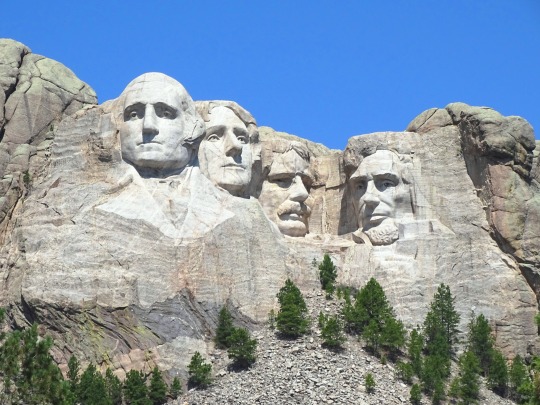


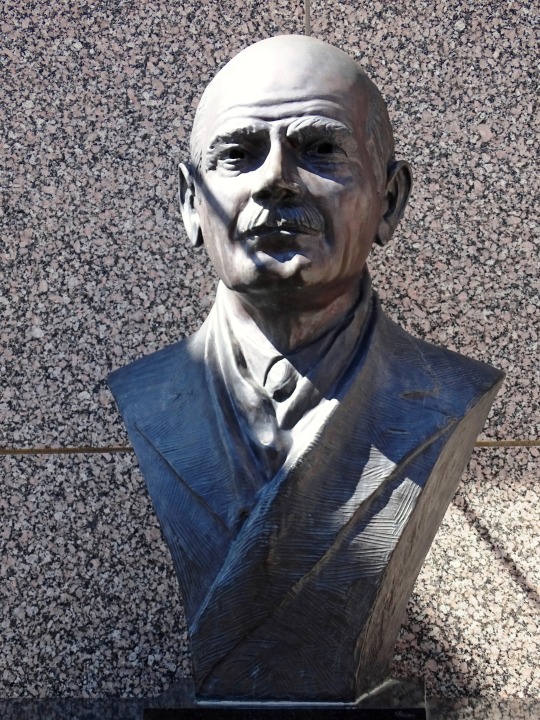





Gutzon Borglum began sculpting Mount Rushmore on October 4, 1927.
#Gutzon Borglum#Mount Rushmore National Memorial#controversial memorial#controversy#Black Hills#white colonialism#summer 2019#began#start#4 October 1927#95th anniversary#US history#South Dakota#landmark#tourist attraction#George Washington#Theodore Roosevelt#Teddy Roosevelt#Abraham Lincoln#Thomas Jefferson#US president#geology
1 note
·
View note
Text
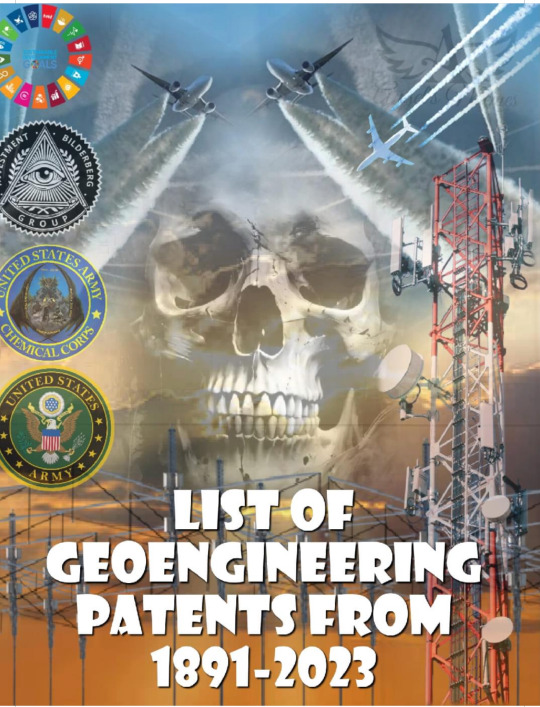
United States Patent and Trademark Office
0462795 – July 16, 1891 – Method Of Producing Rain-Fall
803180 – October 31, 1905 – Means for Producing High Potential Electrical Discharges
1103490 – August 6, 1913 – Rain-Maker
1225521 – September 4, 1915 – Protecting From Poisonous Gas In Warfare
1279823 – September 24, 1918 – Process and Apparatus for Causing Precipitation by Coalescence of Aqueous Particles Contained in the Atmosphere
1284982 – November 19, 1918 – Process and Apparatus for Procuring and Stimulating Rainfall
1338343 – April 27, 1920 – Process And Apparatus For The Production of Intense Artificial Clouds, Fogs, or Mists
1358084 – November 9, 1920 – Method of Producing Fog-Screens
1619183 – March 1, 1927 – Process of Producing Smoke Clouds From Moving Aircraft
1665267 – April 10, 1928 – Process of Producing Artificial Fogs
1892132 – December 27, 1932 – Atomizing Attachment For Airplane Engine Exhausts
1895765 – January 31, 1933 – Artificial Production of Fog
1928963 – October 3, 1933 – Electrical System And Method
1957075 – May 1, 1934 – Airplane Spray Equipment
1993316 – March 5, 1935 – Apparatus for and Method of Producing Oil Fog
2052626 – September 1, 1936 – Method of Dispelling Fog
2097581 – November 2, 1937 – Electric Stream Generator – Referenced in 3990987
2173756 – September 19, 1939 – Process of Producing Fog or Mist by Partial and Flameless Combustion
2352677 – July 4, 1944 – Artificial Fog Production
2476171 – July 18, 1945 – Smoke Screen Generator
2409201 – October 15, 1946 – Smoke Producing Mixture
2480967 – September 6, 1949 – Aerial Discharge Device
2527230 – October 24, 1950 – Method of Crystal Formation and Precipitation
2527231 – October 24, 1950 – Method of Generating Silver Iodide Smoke
2550324 – April 24, 1951 – Process For Controlling Weather
2582678 – June 15, 1952 – Material Disseminating Apparatus For Airplanes
2611992 – September 30, 1952 – Engine Exhaust Operated Fluent Material Distributor
2614083 – October 14, 1952 – Metal Chloride Screening Smoke Mixture
2633455 – March 31, 1953 – Smoke Generator
2688069 – August 31, 1954 – Steam Generator – Referenced in 3990987
2721495 – October 25, 1955 – Method And Apparatus For Detecting Minute Crystal Forming Particles Suspended in a Gaseous Atmosphere
2730402 – January 10, 1956 – Controllable Dispersal Device
2903188 – April 2, 1956 – Control of Tropical Cyclone Formation
2756097 – July 24, 1956 – Process for Weather Control
2801322 – July 30, 1957 – Decomposition Chamber for Monopropellant Fuel – Referenced in 3990987
2835530 – May 20, 1958 – Process for the Condensation of Atmospheric Humidity and Dissolution of Fog
2871344 – January 27, 1959 – Long Distance Communication System
2881335 – April 7, 1959 – Generation of Electrical Fields
2908442 – October 13, 1959 – Method For Dispersing Natural Atmospheric Fogs And Clouds
2962450 – November 29, 1960 – Fog Dispelling Composition
2963975 – December 13, 1960 – Cloud Seeding Carbon Dioxide Bullet
3019989 – February 6, 1962 – Atmospheric Space Charge Modification
2986360 – May 30, 1962 – Aerial Insecticide Dusting Device
3046168 – July 24, 1962 – Chemically Produced Colored Smokes
3056556 – October 2, 1962 – Method of Artificially Influencing the Weather
3126155 – March 24, 1964 – Silver Iodide Cloud Seeding Generator
3127107 – March 31, 1964 – Generation of Ice-Nucleating Crystals
3131131 – April 28, 1964 – Electrostatic Mixing in Microbial Conversions
3140207 – July 7, 1964 – Pyrotechnic Composition
3174150 – March 16, 1965 – Self-Focusing Antenna System
3234357 – February 8, 1966 – Electrically Heated Smoke Producing Device
3274035 – September 20, 1966 – Metallic Composition For Production of Hydroscopic Smoke
3284005 – November 8,1966 – Weather Control by Artificial Means
3300721 – January 24, 1967 – Means For Communication Through a Layer of Ionized Gases
3313487 – April 11, 1967 – Cloud Seeding Apparatus
3338476 – August 29, 1967 – Heating Device For Use With Aerosol Containers
3375148 – March 26, 1968 – Pyrotechnics Comprising Silver Iodate, Ammonium Nitrate, Nitrocellulose and Nitrate Esters
3378201 – April 16, 1968 – Method for Precipitating Atmospheric Water Masses
3410489 – November 12, 1968 – Automatically Adjustable Airfoil Spray System With Pump
3418184 – December 24, 1968 – Smoke Producing Propellant
3429507 – February 25, 1969 – Rainmaker
3432208 – November 7, 1967 – Fluidized Particle Dispenser
3441214 – April 29, 1969 – Method And Apparatus For Seeding Clouds
3445844 – May 20, 1969 – Trapped Electromagnetic Radiation Communications System
3456880 – July 22, 1969 – Method Of Producing Precipitation From The Atmosphere
3518670 – June 30, 1970 – Artificial Ion Cloud
3517512 – June 30, 1970 – Apparatus for Suppressing Contrails
3534906 – October 20, 1970 – Control of Atmospheric Particles
3545677 – December 8, 1970 – Method of Cloud Seeding
3564253 – February 16, 1971 – System And Method For Irradiation Of Planet Surface Areas
3587966 – June 28, 1971 – Freezing Nucleation
3595477 – July 27, 1971 – Fog Dispersing Method and Compositions
3601312 – August 24, 1971 – Methods of Increasing The Likelihood oF Precipitation By The Artificial Introduction Of Sea Water Vapor Into The Atmosphere Winward Of An Air Lift Region
3608810 – September 28, 1971 – Methods of Treating Atmospheric Conditions
3608820– September 20, 1971 – Treatment of Atmospheric Conditions by Intermittent Dispensing of Materials Therein
3613992 – October 19, 1971 – Weather Modification Method
3630950 – December 28, 1971 – Combustible Compositions For Generating Aerosols, Particularly Suitable For Cloud Modification And Weather Control And Aerosolization Process
USRE29142 – May 22, 1973 – Combustible compositions for generating aerosols, particularly suitable for cloud modification and weather control and aerosolization process
3659785 – December 8, 1971 – Weather Modification Utilizing Microencapsulated Material
3666176 – March 3, 1972 – Solar Temperature Inversion Device
3677840 – July 18, 1972 – Pyrotechnics Comprising Oxide of Silver For Weather Modification Use
3690552 – September 12, 1972 – Fog Dispersal
3722183 – March 27, 1973 – Device For Clearing Impurities From The Atmosphere
3748278 – July 24, 1973 – Process and Agents Having an Influence on the Weather
3751913 – August 14, 1973 – Barium Release System
3769107 – October 30, 1973 – Pyrotechnic Composition For Generating Lead Based Smoke
3784099 – January 8, 1974 – Air Pollution Control Method
3785557 – January 15, 1974 – Cloud Seeding System
3788543 – January 29, 1974 – Uniform Size Particle Generator
3795626 – March 5, 1974 – Weather Modification Process
3802971 – April 9, 1974 – Pyrotechnic Formulations for Weather Modification Comprising a Mixture of Iodates
3808595 – April 30, 1974 – Chaff Dispensing System
3813875 – June 4, 1974 – Rocket Having Barium Release System to Create Ion Clouds In The Upper Atmosphere
3835059 – September 10, 1974 – Methods of Generating Ice Nuclei Smoke Particles For Weather Modification And Apparatus Therefore
3835293 – September 10, 1974 – Electrical Heating Apparatus For Generating Super Heated Vapors
3858805 – January 7, 1975 – Ice Nucleation by Micas
3877642 – April 15, 1975 – Freezing Nucleant
3882393 – May 6, 1975 – Communications System Utilizing Modulation of The Characteristic Polarization of The Ionosphere
3887580 – June 3, 1975 – Method of Crystallization of Water in Supercooled Clouds and Fogs and Reagent Useful in Said Method
3896993 – July 29, 1975 – Process For Local Modification of Fog And Clouds For Triggering Their Precipitation And For Hindering The Development of Hail Producing Clouds
3899129 – August 12, 1975 – Apparatus for generating ice nuclei smoke particles for weather modification
3899144 – August 12, 1975 – Powder contrail generation
3915379 – October 28, 1975 – Method of Controlling Weather
3940059 – February 24, 1976 – Method For Fog Dispersion
3940060 – February 24, 1976 – Vortex Ring Generator
3990987 – November 9, 1976 – Smoke generator
3992628 – November 16, 1976 – Countermeasure system for laser radiation
3994437 – November 30, 1976 – Broadcast dissemination of trace quantities of biologically active chemicals
4042196 – August 16, 1977 – Method and apparatus for triggering a substantial change in earth characteristics and measuring earth changes
RE29,142 – February 22, 1977 – Combustible compositions for generating aerosols, particularly suitable for cloud modification and weather control and aerosolization process
4009828 – March 1 1977 – Organic Nucleating Agent for both Warm and Cold Clouds
4035726 – July 12, 1977 – Method of controlling and/or improving high-latitude and other communications or radio wave surveillance systems by partial control of radio wave et al
4096005 – June 20, 1978 – Pyrotechnic Cloud Seeding Composition
4129252 – December 12, 1978 – Method and apparatus for production of seeding materials
4141274 – February 27, 1979 – Weather modification automatic cartridge dispenser
4167008 – September 4, 1979 – Fluid bed chaff dispenser
4347284 – August 31, 1982 – White cover sheet material capable of reflecting ultraviolet rays
4362271 – December 7, 1982 – Procedure for the artificial modification of atmospheric precipitation as well as compounds with a dimethyl sulfoxide base for use in carrying out said procedure
4373391 – February 15, 1983 – Relative Humidity Sensitive Material
4396152 – August 2, 1983 – Aerosol Dispenser System
4402480 – September 6, 1983 – Atmosphere modification satellite
4412654 – November 1, 1983 – Laminar microjet atomizer and method of aerial spraying of liquids
4415265 – November 15, 1983 – Method and apparatus for aerosol particle absorption spectroscopy
4470544 – September 11, 1984 – Method of and Means for weather modification
4475927 – October 9, 1984 – Bipolar Fog Abatement System
4600147 – July 15, 1986 – Liquid propane generator for cloud seeding apparatus
4633714 – January 6, 1987 – Aerosol particle charge and size analyzer
4643355 – February 17, 1987 – Method and apparatus for modification of climatic conditions
4653690 – March 31, 1987 – Method of producing cumulus clouds
4684063 – August 4, 1987 – Particulates generation and removal
4686605 – August 11, 1987 – HAARP Patent / EASTLUND PATENT – Method and apparatus for altering a region in the earth’s atmosphere, ionosphere, and/or magnetosphere
4704942 – November 10, 1987 – Charged Aerosol
4712155 – December 8, 1987 – Method and apparatus for creating an artificial electron cyclotron heating region of plasma
4742958 – May 10, 1988 – Method for Making Artificial Snow
4744919 – May 17, 1988 – Method of dispersing particulate aerosol tracer
4766725 – August 30, 1988 – Method of suppressing formation of contrails and solution therefor
4829838 – May 16, 1989 – Method and apparatus for the measurement of the size of particles entrained in a gas
4836086 – June 6, 1989 – Apparatus and method for the mixing and diffusion of warm and cold air for dissolving fog
4873928 – October 17, 1989 – Nuclear-sized explosions without radiation
4948257 – August 14, 1990 – Laser optical measuring device and method for stabilizing fringe pattern spacing
1338343– August 14, 1990 – Process and Apparatus for the production of intense artificial Fog
4999637 – March 12, 1991 – Creation of artificial ionization clouds above the earth
5003186 – March 26, 1991 – Stratospheric Welsbach seeding for reduction of global warming
5005355 – April 9, 1991 – Method of suppressing formation of contrails and solution therefor
5038664 – August 13, 1991 – Method for producing a shell of relativistic particles at an altitude above the earths surface
5041760 – August 20, 1991 – Method and apparatus for generating and utilizing a compound plasma configuration
5041834 – August 20, 1991 – Artificial ionospheric mirror composed of a plasma layer which can be tilted
5056357 – October 15, 1991- Acoustic method for measuring properties of a mobile medium
5059909 – October 22, 1991 – Determination of particle size and electrical charge
5104069 – April 14, 1992 – Apparatus and method for ejecting matter from an aircraft
5110502 – May 5, 1992 – Method of suppressing formation of contrails and solution therefor
5156802 – October 20, 1992 – Inspection of fuel particles with acoustics
5174498 – December 29, 1992 – Cloud Seeding
5148173 – September 15, 1992 – Millimeter wave screening cloud and method
5242820 – September 7, 1993 – Army Mycoplasma Patent Patent
5245290 – September 14, 1993 – Device for determining the size and charge of colloidal particles by measuring electroacoustic effect
5286979 – February 15, 1994 – Process for absorbing ultraviolet radiation using dispersed melanin
5296910 – March 22, 1994 – Method and apparatus for particle analysis
5327222 – July 5, 1994 – Displacement information detecting apparatus
5357865 – October 25, 1994 – Method of cloud seeding
5360162 – November 1, 1994 – Method and composition for precipitation of atmospheric water
5383024 – January 17, 1995 – Optical wet steam monitor
5425413 – June 20, 1995 – Method to hinder the formation and to break-up overhead atmospheric inversions, enhance ground level air circulation and improve urban air quality
5434667 – July 18, 1995 – Characterization of particles by modulated dynamic light scattering
5436039 – July 25, 1995 – Artificial Snow in an Aggregate Form of Snow Granules
5441200 – August 15, 1995 – Tropical cyclone disruption
5492274 – February 20, 1996 – Method of and Means for Weather Modification
5546183 – August, 13, 1996 – LIDAR Droplet Size Monitor for In-Flight Measurement of Aircraft Engine Exhaust Contrails, Droplets and Aerosols
5556029 – September 17, 1996 – Method of hydrometeor dissipation (clouds)
5628455 – May 13, 1997 – Method and apparatus for modification of supercooled fog
5631414 – May 20, 1997 – Method and device for remote diagnostics of ocean-atmosphere system state
5639441 – June 17, 1997 – Methods for fine particle formation
5762298 – June 9, 1998 – Use of artificial satellites in earth orbits adaptively to modify the effect that solar radiation would otherwise have on earth’s weather
5800481 – September 1, 1998 – Thermal excitation of sensory resonances
5912396 – June 15, 1999 – System and method for remediation of selected atmospheric conditions
5922976 – July 13, 1999 – Method of measuring aerosol particles using automated mobility-classified aerosol detector
5949001 – September 7, 1999 – Method for aerodynamic particle size analysis
5984239 – November 16, 1999 – Weather modification by artificial satellites
6025402 – February 15, 2000 – Chemical composition for effectuating a reduction of visibility obscuration, and a detoxifixation of fumes and chemical fogs in spaces of fire origin
6030506 – February 29, 2000 – Preparation of independently generated highly reactive chemical species
6034073 – March 7, 2000 – Solvent detergent emulsions having antiviral activity
6045089 – April 4, 2000 – Solar-powered airplane
6056203 – May 2, 2000 – Method and apparatus for modifying supercooled clouds
6315213B1 – June 21, 2000 – Method of modifying weather
6110590 – August 29, 2000 – Synthetically spun silk nanofibers and a process for making the same
6263744 – July 24, 2001 – Automated mobility-classified-aerosol detector
6281972 – August 28, 2001 – Method and apparatus for measuring particle-size distribution
20030085296 – November 2, 2001 – Hurricane and tornado control device
6315213 – November 13, 2001 – Method of modifying weather
2002009338 – January 24, 2002 – Influencing Weather Patterns by way of Altering Surface or Subsurface Ocean Water Temperatures
20020008155 – January 24, 2002 – Method and System for Hurricane Control
6382526 – May 7, 2002 – Process and apparatus for the production of nanofibers
6408704 – June 25, 2002 – Aerodynamic particle size analysis method and apparatus
6412416 – July 2, 2002 – Propellant-based aerosol generation devices and method
6520425 – February 18, 2003 – Process and apparatus for the production of nanofibers
6539812 – April 1, 2003 – System for measuring the flow-rate of a gas by means of ultrasound
6553849 – April 29, 2003 – Electrodynamic particle size analyzer
6569393 – May 27, 2003 – Method And Device For Cleaning The Atmosphere
20040060994 – April 1, 2004 – Method for Influencing Atmospheric Formations
20040074980 – April 22, 2004 – Method and Device for Generating a Liquid Mist
0056705 A1 – March 17, 2005 – Weather Modification by Royal Rainmaking Technology
6890497 – May 10, 2005 – Method For Extracting And Sequestering Carbon Dioxide
2446250 – January 4, 2007 – A dust or particle-based solar shield to counteract global warming
20070056436 – March 15, 2007 – Challenger to Natural Twisters, Technology
2007033448 – March 29, 2007 – Production of Localized Artificial Rains in Polar Stratospheric Clouds, to Promote a Rain Wash in the CIO Gas, Reduce the Destruction of the Ozone Layer and a Replacement Process in situ of the Stratospheric Ozone
20070114298 – May 24, 2007 – Hurricane Abatement Method and System
20070158449 – July 12, 2007- Tropical Hurricane Control System
20070215946 – September 20, 2007 – Broadband Communications System via Reflection from Artificial Ionized Plasma Patterns in the Atmosphere
7965488 – November 9, 2007 – Methods Of Removing Aerosols From The Atmosphere
8048309 – August 28, 2008 – Seawater-Based Carbon Dioxide Disposal
20080203328 – August 28, 2008 – Outer Space Sun Screen for Reducing Global Warming
20100072297 – September 24, 2008 – Method for controlling hurricanes
7434524 – October 14, 2008 – Machine to Get Rid of Hurricanes
8012453 – October 27, 2008 – Carbon Sequestration And Production Of Hydrogen And Hydride
20090008468 – January 8, 2009 – How to Tame Hurricanes and Typhoons with Available Technology
7520237 – April 21, 2009 – Hurricane Prevention System and Method
20090255999 – October 15, 2009 – Production or Distribution of Radiative Forcing Elements
20090290761 – November 26, 2009 – Upper Troposphere and Lower Stratosphere Wind Direction, Speed, and Turbidity Monitoring using Digital Imaging and Motion Tracking
7645326 – January 12, 2010 – RFID environmental manipulation
7655193 – February 2, 2010 – Apparatus For Extracting And Sequestering Carbon Dioxide
20100074390 – March 25, 2010 – Method for Weather Modification and Vapor Generator for Weather Modification
20100127224 – May 27, 2010 – Atmospheric Injection of Reflective Aerosol for Mitigating Global Warming
7748662 – July 6, 2010 – Aerial Delivery System
20100170958 – July 8, 2010 – Hurricane Mitigation by Combined Seeding with Condensation and Freezing Nuclei
20100252648 – October 7, 2010 – Climate Processor
20100264230 – October 21, 2010 – Severe Storm / Hurricane Modification Method and Apparatus
20100282914 – November 11, 2010 – Enhanced Aerial Delivery System
20110005422 – January 13, 2011 – Method and Apparatus for Cooling a Planet
20110049257 – March 3, 2011 – Method and Apparatus for Local Modification of Atmosphere
20110101124 – May 5, 2011- Hurricane Abatement System and Method
2011073650 – June 23, 2011 – Atmospheric Delivery System
20110168797 – July 14, 2011 – Method of Weakening a Hurricane
20110174892 – July 21, 2011 – Apparatus and Related Methods for Weather Modification by Electrical Processes in the Atmosphere
20110198407 – August 18, 2011 – Method and Apparatus to Break Up or Annihilate Typhoons, Tornadoes, Cyclones or Hurricanes
20110204159 – August 25, 2011 – Weather Management Using Space-Based Power System
20110284649 – November 24, 2011 – Apparatus and Method for the Mitigation of Rotating Wind Storms
8079545 – December 20, 2011 – Ground based Manipulation and Control of Aerial Vehicle during nonflying operations
20120024971 – February 2, 2012 – Methods for Environmental Modification with Climate Control Materials and Coverings
8262314 – September 11, 2012 – Method for Decreasing the Intensity and Frequency of Tropical Storms or Hurricanes
0117003 – October 5, 2012 – Geoengineering Method Of Business Using Carbon Counterbalance Credits
20120267444 – October 25, 2012- Artificial Freezing Apparatus and Freezing Method Therefor
20120286096 – November 15, 2012 – Aerial Delivery Devices, Systems and Methods
20130008365 – January 10, 2013 – System and Method for Decreasing the Intensity and Frequency of Tropical Storms or Hurricanes
20130015260 – January 17, 2013 – Concept and Model for Utilizing High-Frequency or Radar or Microwave Producing or Emitting Devices to Produce, Effect, Create or Induce Lightning or Lightspeed or Visible to Naked Eye Electromagnetic Pulse or Pulses, Acoustic or Ultrasonic Shockwaves or Booms in the Air, Space, Enclosed, or Upon any Object or Mass, to be Used Solely or as Part of a System, Platform or Device Including Weaponry and Weather Modification
8373962 – February 12, 2013 – Charged seed cloud as a method for increasing particle collisions and for scavenging airborne biological agents and other contaminants
20130038063 – February 14, 2013 – Apparatus and Method for Inhibiting the Formation of Tropical Cyclones
201300043322 – February 21, 2013 – Processes and Apparatus for Reducing the Intensity of Tropical Cyclones
8402736 – March 26, 2013 – Method and Apparatus for Suppressing Aeroengine Contrails
8439278 – May 14, 2013 – Apparatus for Producing a Mass of Water Vapor, Apparatus for Producing, Moving, and Climbing a Mass of Water Vapor, and Method of Causing Artificial Stimulation of Rain
20130175352 – July 11, 2013 – Method to Influence the Direction of Travel of Hurricanes
20130186127 – July 25, 2013 – Ice Floater for Facilitating Ice-Freezing on Water Surface
20130206912 – August 15, 2013 – Moisture Dispersion
20140055876 – February 27, 2014 – Method for Controlling Land Surface Temperature using Stratospheric Airships and Reflector
20140131471 – May 15, 2014 – Apparatus to Channel Large Air Masses for Climate Modification
20140145002 – May 29, 2014 – System for Facilitating Cloud Formation and Cloud Precipitation
20140224894 – August 14, 2014 – Technique to Mitigate Storms using Arrays of Wind Turbines
8825241 – September 2, 2014 – Autonomous Wave-Powered substance Distribution Vessels for Fertilizing Plankton, Feeding Fish, and Sequestering Carbon from the Atmosphere
8944363 – February 3, 2015 – Production or Distribution of Radiative Forcing Agents
20150077737 – March 19 2015 – System and Methods for Monitoring an Environment
9002660 – April 7, 2015 – Device and Method for Determining and Indicating Climate-Relevant Effects of a Contrail Produced by an Airplane
20150230415 – August 20, 2015 – Methods for Decreasing Local Temperature using High Albedo Materials
20150337224 – November 26, 2015 – Microwave Acceleration of Carbon Gasification Reactions
9311539 – April 12, 2016 – Aircraft Contrail Detection
9429348 – August 30, 2016 – Method and Device for Producing Snow
9491911 – November 15, 2016 – Method for Modifying Environmental Conditions with Ring Comprised of Magnetic Material
9589473 – March 7, 2017 – Method and System for Automatically Displaying Flight Path, Seeding Path, and Weather Data
9715039 – July 25, 2017 – Apparatus and System for Smart Seeding within Cloud Formations
20170217587 – August 3, 2017 – Vehicles and Systems for Weather Modification
20170303479 – October 26, 2017 – Warm Cloud Catalyst, Preparation Method Therefor and Application Thereof
20180006422 – January 4, 2018 – Methods for Disrupting Hurricane Activity
20180006421 – January 4, 2018 – Methods for Disrupting Tornadic Activity
9924640 – March 27, 2018 – Modifying Sunlight Scatter in the Upper Atmosphere
20180217119 – August 2, 2018 – Process and Method for the Enhancement of Sequestering Atmospheric Carbon through Ocean Iron Fertilization, and Method for Calculating net Carbon Capture from said Process and Method
10189753 – January 29, 2019 – Fog-Generating Device Comprising a Reagent and Ignition Means
2019203461 – June 6, 2019 – Airships for Weather Manipulation
10314249 – June 11, 2019 – Systems and Methods of Inducing Rainfall
10375900 – August 13, 2019 – Rain Induced by Supercontinuum Laser Beams
10433408 – October 1, 2019 – Methods for Affecting Spinning Atmospheric Phenomena
10435165 – October 8, 2019 – Aircraft Electrically-Assisted Propulsion Control System
20190364748 – December 5, 2019 – Method and System for Expressing Airborne Cloud Seeding Line Considering Cloud Water
20200187430 – June 18, 2020 – Helical Artificial Generator of Tornado, Hurricane, Yellow Dust, and Typhoon
20200196539 – June 25, 2020 – Device for Seeding a Cloud Cell
10701871 – July 7, 2020 – Systems for Maintaining and/or Decreasing Water Temperature using High Albedo Materials
20200233115 – July 23, 2020 – Method and System for Determining Cloud Seeding Potential
WO2020148644A1 – July 23, 2020 – 3d Reduced Graphene Oxide/Sio 2 Composite for Ice Nucleation
20200261939 – August 20, 2020 – Apparatus for Generating and Optically Characterizing an Aerosol
2020101897 – September 9, 2020 – Artificial Rainmaking by High Power Laser Initiation Endothermic Reactions through Drone Aircraft Remote Control System
20200288650 – September 17, 2020 – Technology and Technique to Prevent, Diminish or Interfere with the Formation of Hurricanes on Earth from one or more Platforms in Space
20200288651 – September 17, 2020 – Methods for Cooling Water Temperature using High Albedo Materials
20200315104 – October 8, 2020 – Propagating Sound Through Bodies of Water, to Generate and Direct Wind, for the Purpose of Moderating and Affecting Weather Patterns
20200386970 – December 10, 2020 – Aerostatically Stabilized Atmospheric Reflector to Reduce Solar Irradiance
10888051 – January 12, 2021 – Intelligent Systems for Weather Modification Programs
20210037719 – February 11, 2021 – Planetary Weather Modification System
10941705 – March 9, 2021 – Hanson-Haber Aircraft Engine for the Production of Stratospheric Compounds and for the Creation of Atmospheric Reflectivity of Solar Radiation in the 555nm Range and to Increase Jet Engine Thrust and Fuel Economy through the Combustion of Ammonia and Ammonia By-Products
2021063943 – April 8, 2021 – Bacterial Preparations for Ice Nucleation
20210153442 – May 27, 2021 – Systems and Methods for Rain Cloud Initiation
20210163157 – June 3, 2021 – Artificial Ring, Solenoid System to Terraform
20210235638 – August 5, 2021 – Weather Management of Cyclonic Events
2021152336 – August 8, 2021 – Method of Cloud Seeding using Natural Ice Nucleating Agents
20210285851 – September 16, 2021- System for Sampling and Analyzing Contrails Generated by an Aircraft
20210289720 – September 23, 2021 – Systems and Methods for Producing Rain Clouds
2021105881 – October 21, 2021 – Process for Generating Marine Clouds and Ocean Microbubbles
20210329922 – October 28, 2021 – Compositions and Methods for Enhanced CO2 Capture and Storage
20210329852 – October 28, 2021 – Method for Preventing a Formation of, and/or for Dispersing, a Tropical Cyclone, and Arrangement Therefor
20210352856 – November 18, 2021 – Aerial Electrostatic System for Weather Modification
2021107294 – December 9, 2021 – Wind Turbines for Marine Cloud Brightening Dispersion
2022003028 – January 6, 2022 – Apparatus for Precipitation of Atmospheric Water
23220065599 – March 3, 2022 – Rocket for Artificial Rainfall using Ejection Hygroscopic Flare
11274534 – March 15, 2022 – Artificial rain to support water flooding in remote oil fields
20220113450 – April 14, 2022 – Calculation Method of Total Artificial Precipitation in Seeding Area Compared to Non-Seeding Area
2022094269 – May 5, 2022 – Reflective Hollow SRM Material and Methods
3994976 – May 11, 2022 – Apparatus for Electro-Spray Cloud Seeding
11330768 – May 17, 2022 – Systems and Methods for Producing Rain Clouds
20220268505 – August 25, 2022 – Method and Apparatus for Making Falling Snow
2022186970 – September 9, 2022 – Method of Geoengineering to Reduce Solar Radiation
20220355925 – November 10, 2022 – Aeronautical Car and Associated Features
20220357482 – November 10, 2022 – Method and System of Analyzing Ingredients of Artificial Rainfall for Verification of Cloud Seeding Effect
20230050373 – February 16, 2023 – Electromagnetic System to Modify Weather
20230075132 – March 9, 2023 – System for Moderating Energy Absorption at the Earth’s Surface with a Programmable Forcing Network of Climate Control Panels
20230117390 – April 20, 2023 – System and Method for Proactive and Reversible Mitigation of Storm/Hurricane/Typhoon/Cyclone
20230126982 – April 27, 2023 – Method for Analyzing Effect of Hygroscopic Seeding Material Sprayed on Ground Aerosol Concentration Through Airborne Cloud Seeding Experiment
20230141493 – May 11, 2023 – Device for Unmanned Aerial Vehicle to Deploy a Rainfall Catalytic Bomb
20230149876 – May 18, 2023 – Coated Chloride Salt Particles and Methods of Making and Using the Same
180 notes
·
View notes
Text


October 24, 1928
Journals of Anais Nin 1927-1931
[volume 4]
#anais nin#october#october 24#literature#words#quotes#academia#dark academia#quote#lit#books#books and libraries#reading#quote of the day#bookworm#book quotes#prose#booklr#bibliophile#excerpt
397 notes
·
View notes
Photo

CNJ engine number 225, engine type 2-6-4
Local passenger, backing; 3 cars. Photographed: somewhere in N.J., October 31, 1927.
37 notes
·
View notes
Text


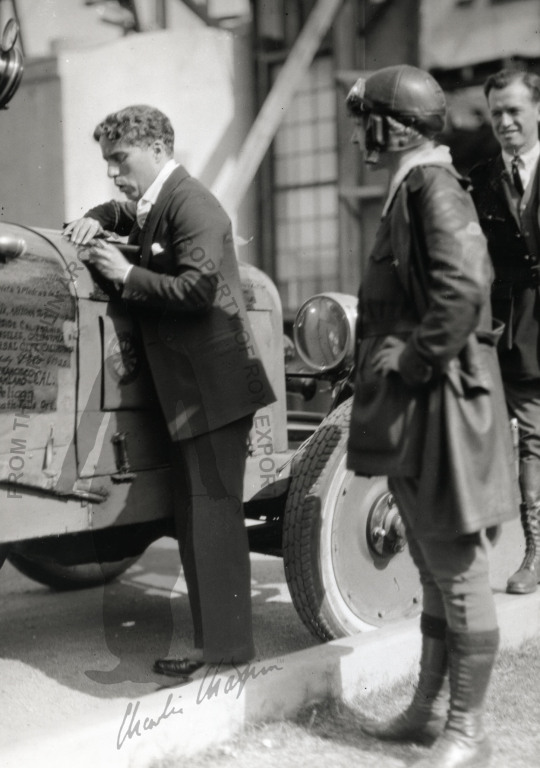
Charlie Chaplin with visitors to his studio: top and bottom photo to Charlie's left is Aloha Wanderwell.
Aloha Wanderwell (Idris Galcia Hall née Welsh, October 13, 1906 – June 4, 1996) was a Canadian explorer, author, filmmaker, and aviator. Beginning when she was 16 years old, she become the first woman to circumnavigate the globe, driving a Ford 1918 Model T over a five year period (1922–1927). Ultimately she traveled 500,000 miles across 80 countries.
11 notes
·
View notes
Text
Tumblr's Guide to Shostakovich- Part 4: Establishing a Star
It's been a while since my last Tumblr's Guide to Shostakovich; I'm so sorry! I've got a ton of projects I'm working on and I just haven't had time for this one. But now that I'm back, it's time to cover the late 20s and early 30s, which is quite a bit of ground.
So, after the composition of his First Symphony in 1925, Shostakovich was quickly becoming noticed, both within the USSR and internationally. 1927 proved to be a consequential year for him, as he began performing as a concert pianist and participated in the First International Chopin Competition in Warsaw, although he did not place among the winners. Nonetheless, he regarded the competition as a success in a letter to his mother, from February 1, 1927. The pianist Nathan Perelman characterized Shostakovich's pianistic style as such:
Shostakovich emphasized the linear aspect of music and was very
precise in all the details of performance. He used little rubato in his playing, and it lacked extreme dynamic contrasts. It was an ‘anti-sentimental’ approach to playing which showed incredible clarity of thought. You could say that his playing was very modern; at the time we accepted it and took it to our hearts. But it made less impression in Warsaw, where [Lev] Oborin’s more decorative, charming and ‘worldly’ approach, albeit somewhat militaristic,
was the order of the day. However, Shostakovich seemed to foresee that, by the end of the twentieth century, his style of playing would predominate, and in this his pianism was truly contemporary.

(Participants and jury of the First International Chopin Competition, 1927. Shostakovich can be seen third from the left in the second row.)
1927 also saw an event that would once again change the course of Shostakovich's life- in addition to the composition of his Second Symphony (subtitled "To October"), we see in correspondence his first mentions of a foray into operatic composition. While Shostakovich had set words to music before (for instance, "To October" includes an ideological text by Aleksandr Bezyemensky), he decided to choose a work familiar to him as the subject of his first opera, The Nose by Nikolai Gogol, which he mentions in a letter to his friend, the critic Boleslav Yavorsky, on June 19, 1927. (Yavorsky was one of Shostakovich's primary correspondents until August of that year, when he met the polymath and scholar Ivan Sollertinsky, who was to become his closest friend. For more on Sollertinsky, I have a whole post on him here.)
Shostakovich was a lifelong Gogol enthusiast and even had many of his stories memorized by heart, which he was often fond of quoting, both in correspondence and conversation, so it should come as no surprise that he decided to adapt a Gogol story as his first opera, even writing the libretto himself and adapting long passages of the original short story into it (as well as references to other Gogol stories as well!). However, to those unacquainted with Shostakovich, The Nose seems like an unlikely choice for an operatic adaptation, especially considering the great canon of Russian-language literature that has historically been used for operatic adaptations, such as Tchaikovsky's Evgeny Onegin and Pikovaya Dama (or The Queen of Spades), both adapted from Pushkin. The Nose, on the surface, is a bizarre and comedic story, in which the main character, Collegiate Assessor Kovalyov, wakes up to find his nose removed from his face. The Nose is later found walking around Saint Petersburg, where it has gained sentience, talks, and even receives a promotion, much to the status-obsessed Kovalyov's chagrin. Kovalyov is unsuccessful in getting people to believe that his nose is now sentient, shenanigans ensue, and by the end, he wakes up once again to find his nose reattached, as Gogol's narrator remarks on the absurdity and ridiculousness of the story.
It seems like impossible subject matter for an opera, and yet, Shostakovich makes it work. With his penchant for sarcasm and the grotesque, as well as his use of inverting conventions of comedic and tragic music with the effect of making tragic situations seem ridiculous and ridiculous situations seem tragic, Shostakovich enriches Gogol's original Nose (assisted by the author's trademark skaz literary style) in his adaptation, while keeping it distinctly Gogolian. The Nose would be completed in 1928, and premiered in 1930, although it was not a success among the general public at the time, largely due to the avant-garde music and absurdist themes. It would not be performed in the USSR again until 1972.

(A poster for the premiere of The Nose at the Maly Opera Theatre, Saturday January 18th, 1930.)
In 1928, Shostakovich would make a strong connection with the theatre director and playwright Vsevolod Meyerhold, and wrote music for his theatre in Moscow. Shostakovich's stay with Meyerhold, as evidenced from letters to Sollertinsky, was less than ideal- he found Meyerhold and his wife, the actress Zinaida Raikh, to be at times obnoxious in the way they fawned over each other and their two children, and their nanny made unwanted advances on him- but found a career writing music for stage plays, most notably in collaboration with the poet and playwright Vladimir Mayakovsky, whose play The Bedbug he composed accompanying music for.
Shostakovich accepted a position at the theatre collective TRAM (Russian: Театр Рабочей Молодёжи, or Worker's Youth Theatre) in 1929, where he composed music for a number of ideological plays. Scholar Elizabeth Wilson notes that while Shostakovich enjoyed writing music for some of the TRAM plays, he also joined TRAM in an effort to shield himself from criticism from the RAPM (Russian Association of Proletarian Musicians), a more conservative musical branch that was, at the time, amassing power. The RAPM was in opposition at the time to the ACM (Association For Contemporary Music), and encouraged many elements that would later be incorporated into the Socialist Realism style that would take effect in the mid-30s. However, neither organization was around for long; the ACM was dissolved in 1931, while the RAPM was dissolved in 1932. While we know that Shostakovich was growing increasingly aware of the gradual restrictions being placed on music, in the coming decades, the intersection between Soviet politics and music would become unavoidable, and the next opera Shostakovich would compose in just a few years' meant he would find himself straight in the crossroads.
Thank you for reading! In the next entries, we’ll get further into the 30s, where there’s a lot to cover!
#shostakovich#dmitri shostakovich#tumblr's guide to shostakovich#history#soviet history#soviet music history#music history#classical music#composer#classical music history#classical composer#opera
19 notes
·
View notes
Text
Reflections on my Universal Horror marathon
It is November 1st, 2023. As anyone can tell after being around me for, I don't know, five minutes, I am a huge horror queen. For my birthday this year, I got a big book on Universal horror, filled with production photos, background, trivia, actor bios, etc. I decided to use this book as a sort of guided reading list, where I would marathon all of the movies discussed in the book and read along. When I was first seriously doing a deep dive into horror in 2018, the classic 30s horror franchises were some of the first that I chose to get into, and so it had been five years or so since I had seen some of my old monster friends. (And many of the movies on this list I had not seen before!) I was excited for this project and decided to start it at 99 days until Halloween; I had found a Sam (1) "Countdown to Halloween" clock that counted from 99 days to 0 days last year, at the Spirit Halloween clearence sale. (2) So, 99 days to do a book's worth of movies—how hard could it be?
(1) from Trick r Treat, 2007
(2) He's currently sitting on my bedside table, at 0 days left!
Turns out, it was rather difficult! I hadn't expected the book to have so many entries in it.
The entire list of films that I did is as follows, broken down by chapter:
Silent Era (5 films): The Hunchback of Notre Dame 1923, The Phantom of the Opera 1925, The Phantom of the Opera 1943, The Cat and the Canary 1927, The Man Who Laughs 1928
Dracula (5 films): Dracula 1931, Drácula 1931, Dracula's Daughter 1936, Son of Dracula 1943, House of Dracula 1945
Frankenstein (4): Frankenstein 1931, Bride of Frankenstein 1935, Son of Frankenstein 1939, Ghost of Frankenstein 1942
The Wolf Man (5): Werewolf of London 1935, The Wolf Man 1941, Frankenstein Meets The Wolf Man 1943, House of Frankenstein 1944, She-Wolf of London 1946
The Mummy (5): The Mummy, The Mummy's Hand, The Mummy's Tomb, The Mummy's Ghost, The Mummy's Curse
The Invisible Man (5): The Invisible Man 1933, The Invisible Man Returns 1940, The Invisible Woman 1941, Invisible Agent 1942, The Invisible Man's Revenge 1944
The Gill Man (3): Creature From the Black Lagoon 1954, Revenge of the Creature 1955, The Creature Walks Among Us 1955
"Universal's Lesser Known Monsters" (3+3+6): Paula the Ape Woman—Captive Wild Woman 1943, Jungle Woman 1944, The Jungle Captive 1945; The Creeper—Pearl of Death 1944, House of Horrors 1946, The Brute Man 1946; The Inner Sanctum Mystery Series—Calling Dr Death 1943, Weird Woman 1944, Dead Man's Eyes 1944, The Frozen Ghost 1944, Strange Confession 1945, Pillow of Death 1945
Non-serial horror (14): The Old Dark House 1932, Murders in the Rue Morgue 1932, The Black Cat 1934, The Raven 1935, Black Friday 1940, Man-Made Monster 1941, Horror Island 1941, Night Monster 1942, The Mad Ghoul 1943, The Strange Door 1951, The Black Castle 1952, Tarantula 1955, The Mole People 1956, Monster on the Campus 1958
That's 68 movies in 99 days by my reckoning. I also only did these on the nights that Mack worked or was dancing, which further tightened the number of days that I had. Good thing they were each about 60 minutes. I could never do this in the modern era where everyone bloats their movies to an absurd degree.
See, I thought it would be something small, with like... 30 movies in 99 days. I didn't expect all of this! Maybe I should have checked how many movies that would be before solidly deciding to do this challenge, eh? And it's not even allll of the Universal horror movies—Lugosi and Karloff did like six "duet" movies like The Raven and The Black Cat, but the book only focused on two and briefly name-dropped the others. By the mid-October, when I was in the final chapter, I was doing two or three movies per night, and it was quite a stressful thing, not knowing how I'd get it all to line up before Mack took his Halloweek vacation!
But I did it. I'm extremely proud that I stuck to it. And also, I will absolutely not do it again! Perhaps in another five years I'll have a craving for the Universal horror movies again, and I'll do my favourite 30 or so, but this insanity will not be repeated, or at least not with this time scale.
Anyway. Here are some things I wish to talk about:
Appreciating Silent Film
The silent era has always been one that I've wanted to get into, but I've never known how exactly to break into it. I've done a few silent movies before—if you're looking for a rec, Häxan from 1923 is a very disturbing and deeply effective look at medieval witchcraft—but I never felt like I had a sure footing in it.
And, well, the book starts at 1923 with Hunchback, no easing into it. And, turns out, it was mostly fine!
The 1925 Phantom was stunning. I love the tinted vibes of the silent era, and this film had a rare Technicolor sequence during the Masquerade bit where all the costumes were in colour, and it was amazing to see. There's a 19...29, I think?, scored version, which is what I watched, and the score pops off.
The 1927 Cat and the Canary ended up as one of my favourites of the whole marathon—there's no scoring option for this, but it's so fun I didn't care. The story revolves around a will reading on a dark and stormy night, a will reading, and a sudden heiress who has to prove her sanity as a condition of the will, all while an antagonistic family and a killer are loose in the mansion. It's a horror-comedy, and it is such a good time. I had rated it 5/5 on letterboxd years ago, but I had forgotten why, and I quickly rediscovered the reason!
So yeah, I got a couple silents to add to my résumé, next to stuff like Häxan and the typical Dr Caligari.
2. The Evolution of What Horror Is
One of my favourite things to think about and consider is what society's horror fixation is in a given era and how it all ties together in a sort of greater historiography.
This marathon covers the 20s through the late 50s, with most of it happening in the 30s and 40s. There's a pretty clear chain of where the focus goes in these—in the 20s, it's a lot of classic adaptations that have a gruesome element but which may not be yknow categorical Genre Horror as we recognise it and label it on a dvd box. The 30s explore the more typical folk myths and superstitions, such as vampires and werewolves; if there is science, it is either rather crude or primitive (Frankenstein using lightning bolts and sewing pieces of body together) or even has a mystical connection (Werewolf of London's Tibetan miracle flower—often this mysticism can unfortunately veer into Orientalist tropes :/). The 40s, and particularly around 1945 with the atomic bomb, the old superstitions lose steam and modern science begins to catch up, to the point that the 50s horror movies are, essentially, all a world away in terms of science—I mean, they try behavioural therapy on the Creature from the Black Lagoon in Revenge of the Creature! The later "Monster Mash" movies where all of the classic monsters join up have them turning to modern science to solve their problems—I believe it's in House of Dracula where the Wolf Man is legitimately ""cured"" by a cranial surgery based on some science, and Dracula gets cured by looking at the particulates in his blood and stuff. Anyway, continuing in the 50s, There's all this talk of atoms and radiation and such, and it's such a strong blend of science fiction and horror, such that the two genres are practically constant bedmates for this era. (Contrary to a popular tumblr post comparing Godzilla to 50s superhero comics, radiation actually did inspire a lot of monsters in America too; you just needed to know where to look, and it's here, in the giant Creature Features, where Godzilla would fit right in.)
I remember shortly after House of Dracula, I was talking to Mack, and I essentially launched into a ten minute lecture about this stuff, how it all ties into what was happening in society and whatnot. I have so much to say, but I won't word vomit it here.
3. These Movies Said, Continuity WHO?
One of the recurrent jokes I had while watching these movies is that the writers were clearly not interested in keeping continuity between films. There are two instances that I internally screamed at because of how insane they were—(1) In House of Frankenstein, Dracula is destroyed in the sunlight, The Wolf Man is shot by a silver bullet and dies, and the Frankenstein creature sinks into quicksand and disappears. Most of the plot of House of Frankenstein is quickly retold by the mad scientist character of House of Dracula; he leaves out the Wolf Man's death, probably because it would upset the Wolf Man, to whom he is speaking. Dracula is also back without explanation. (2) The Mummy's Ghost is set in Connecticut; they are very emphatic that they are in Connecticut. It is said over and over. At the end, the Mummy is chased into the swamp of Connecticut (yknow, the famous swamps of Connecticut) —at the very beginning of The Mummy's Curse, they point to a stretch of swampland, say that THIS is where Kharis sank all those years ago (it was 6 months in real time btw), and that he should still be there. This movie is set in the bayou of Louisiana, with a cheerful barkeep woman singing in French to evoke the whole "Cajun French" world. How Kharis went from Connecticut to "this is the exact spot where he fell" in Louisiana? Never mentioned.
Additionally, in one of the later Frankensteins, Ygor has his brain transplanted into the Frankenstein Monster in a scheme; Ygor-Frankenstein Monster triumphantly turns to the assembled characters and speaks to them, telling them how he tricked them and won. In the next movie, which I believe is Meets The Wolf Man, the Frankenstein Monster is a mute brute once more, and Ygor does not exist anymore. Now, the wildest thing is that this is not the writers cherrypicking what is canon and what is not—no, in the script the Frankenstein Monster-Ygor was to have deep conversations with the Wolf Man, and this was recorded. It was only in post-production that all of this was struck; all those scenes were either tossed or edited down. Apparently there are visuals of those scenes in the movie where you can watch the FM's mouth move, but the audio has been replaced with music or sound effects. Wild stuff.
There's more, plenty more, but you get the picture. I suppose in a world without home video, where your audience may not have seen the previous films or may not remember them well, you can convince them of anything and continuity matters less.
4. Some of these movies destroyed my will to go on (with the marathon)
Overall, I greatly enjoyed my time with this marathon. I found most of these movies to be very interesting and illuminating.
But there are two series in this that just crushed my spirit—The Mummy and Paula the Ape Woman. They were so awful that it made me not want to keep going.
The Mummy is just such a confused mess; the worst time I had was with The Mummy's Tomb. Tomb is the third movie in the series, so of course there's some catch-up that has to be done to get the audience up to speed. (They all do it, it's normal.) Now, this is a 60 minute movie. Tomb begins with a TWELVE MINUTE "recap" of the first two movies, using a flashback to show scenes from the old movies—all the while narrating them to construct a new story of what supposedly happened and wildly making up new stuff that directly contradicts what is visible on screen. TWELVE MINUTES out of SIXTY, one fifth of the movie, is just incredibly out of context scenes to do whatever the writers want.
And that's not even getting into the cultural sensitivity discussions around these movies, because girl........... girl. It's rough on that front, to say the least. (They reuse an Incan temple, if I remember right, as an Egyptian tomb in the last one, I think it was, and you can clearly see Mesoamerican imagery all over the walls, but they're yelling about pharoahs and stuff. And that's the tip of the iceberg.)
Paula the Ape Woman is about an ape who gets a brain and blood transplant and becomes a real woman, or at least temporarily. Now, audience, given that this an early 40s movie... do you think this uncontrollable, animalistic beast of a woman is going to be white or no? :////
The Paula movies just need to be forgotten. Not every Universal horror movie is a lost gem in the sands of time. Let's just say that.
5. James Whale, Lon Chaney Jr, and thoughts on recurring names and faces
With the studio system firmly in place for most of this marathon's concerned eras, there are many repeating names throughout the movies. It became something of a scavenger hunt to find "Gowns by Vera West" in the title credits of most movies—according to letterboxd, I think I hit 37 movies with her credited on wardrobe.
Some of these repeating names I grew to really like. James Whale really is among the greats, isn't he? Bride of Frankenstein is nothing short of a masterpiece, and his other work (especially The Old Dark House) is great. I would love to do a deeper dive just into his other works. He seems so fascinating! And he was gay, and apparently very very open about it.
A name I came to dislike, unexpectedly really, was Lon Chaney Jr, most known for The Wolf Man. I went in with a higher opinion of him, only knowing him from The Wolf Man; he eventually became a bit of a golden boy on the Universal horror sets, and so he got into a ton of different projects. And boy, did he ever only play one character across everything! He's extremely good at it, but he only ever played a sad, pathetic little man who is overwhelmed by the weight of the world! We get it, dude. Play a different character!
6. Conclusions
This is getting away from me, so I'll wrap this up. Thank you if you even skimmed this far!
I really did enjoy this marathon. It was stressful, a little, but a fun stress, all things considered.
Rapidshot overall favs: The Bride of Frankenstein, the Cat and the Canary, Revenge of the Creature, Dracula, The Old Dark House, Tarantula, 1925's Phantom of the Opera, the Raven.
Rapid boots: The Mummy franchise, Paula the Ape Woman series, She-Wolf of London, the Black Cat, Ghost of Frankenstein.
I love this era of horror: It's almost a cosy horror to me, with giant fog machines, goofy big analog science contraptions, and painted backdrops (you can see the painted backdrops and their flatness during the early 30s ones especially). I like that there are fewer cuts compared to the modern day: They hold the camera on the actors, and often the camera is not on a close-up, giving plenty of time for interesting physicality. It almost feels staged or traditionally theatrical in a way that modern movies do not. (Which makes sense, as the earlier writers and directors and actors all came from and routinely did theatre. Lugosi got Dracula after he did the stage version of it.) Many of them are very comfortable feeling, and they're short too!
I don't think I could do another grand tour like this again for years, at mininum,—and I won't revisit Paula and probably not The Mummy—but I do want to revisit it more than I have in the last few years. These monsters are my FRIENDS!
Anyway. Stan Boris Karloff, James Whale, and especially Elsa Lanchester
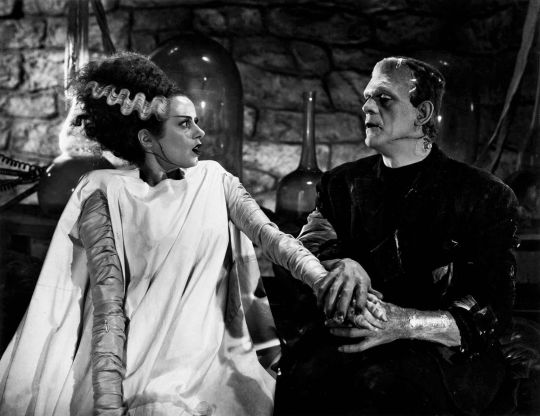
#my universal horror marathon#thank you to anyone who reads#i mostly just wanted to write this up for me
6 notes
·
View notes